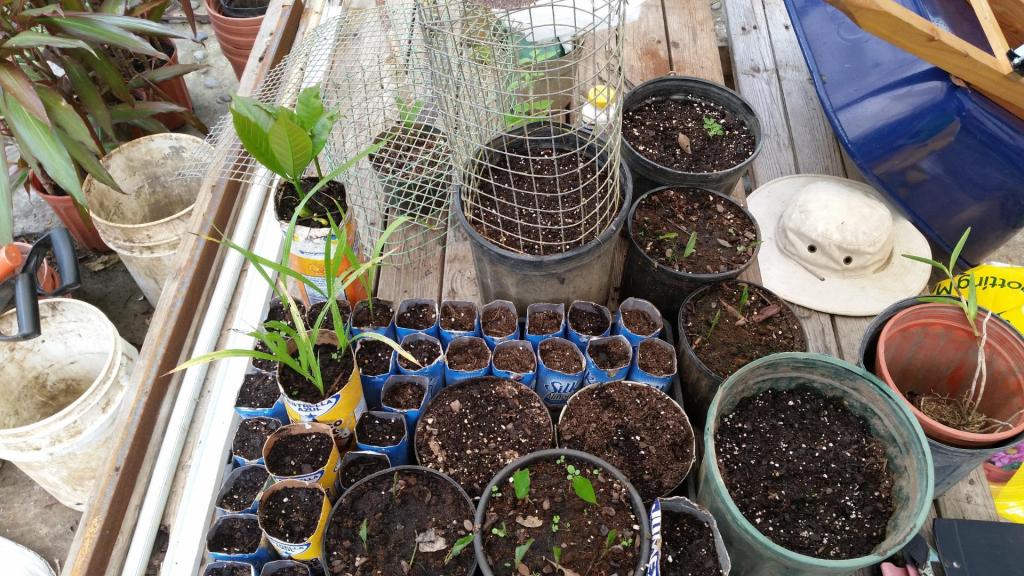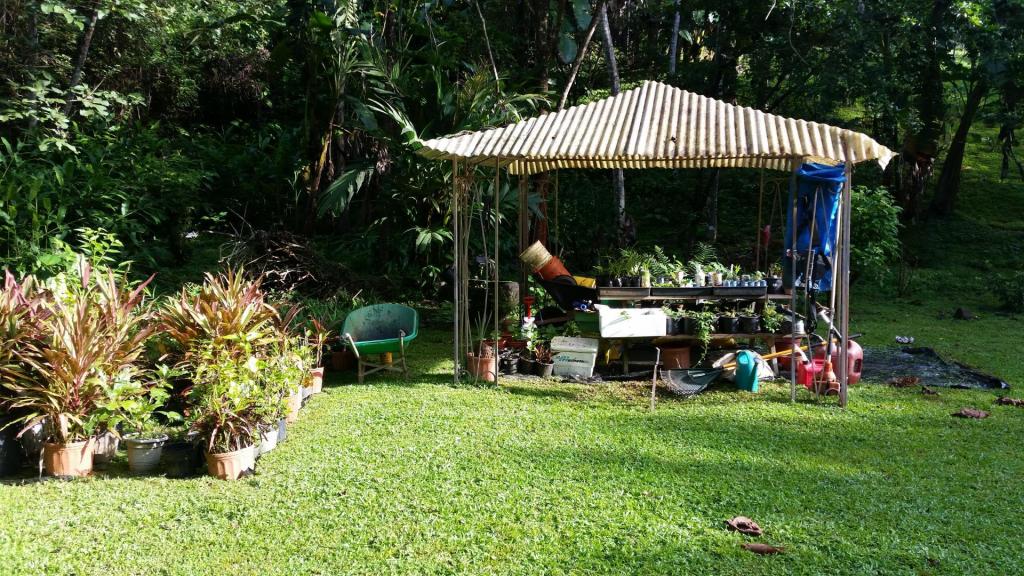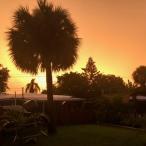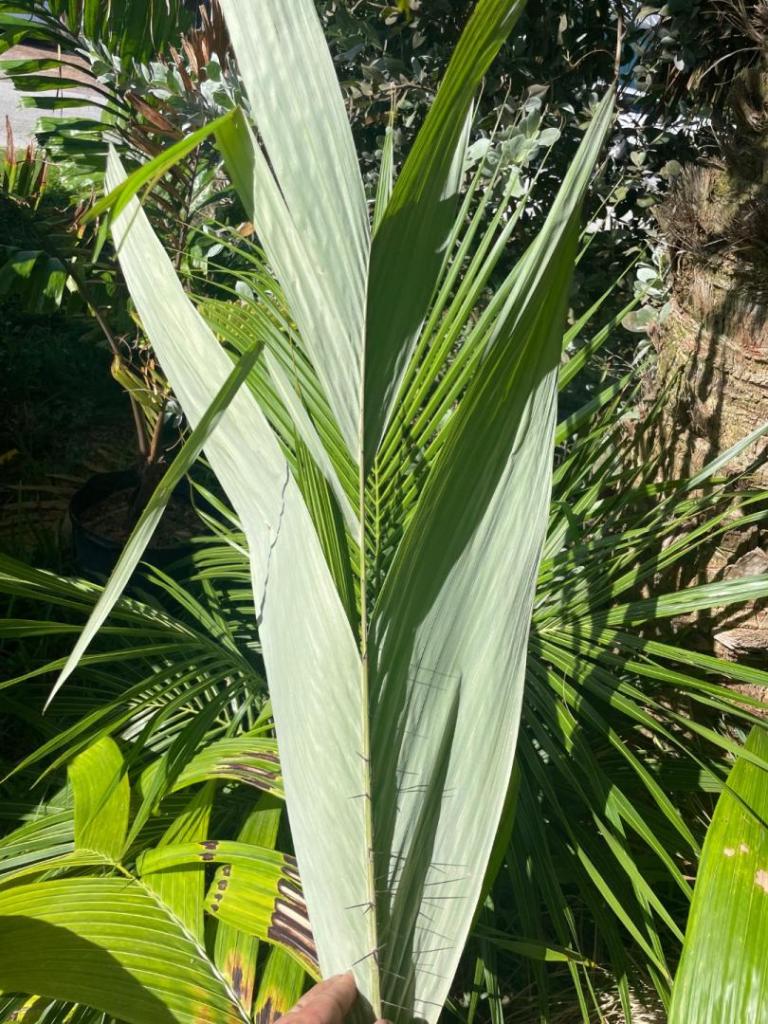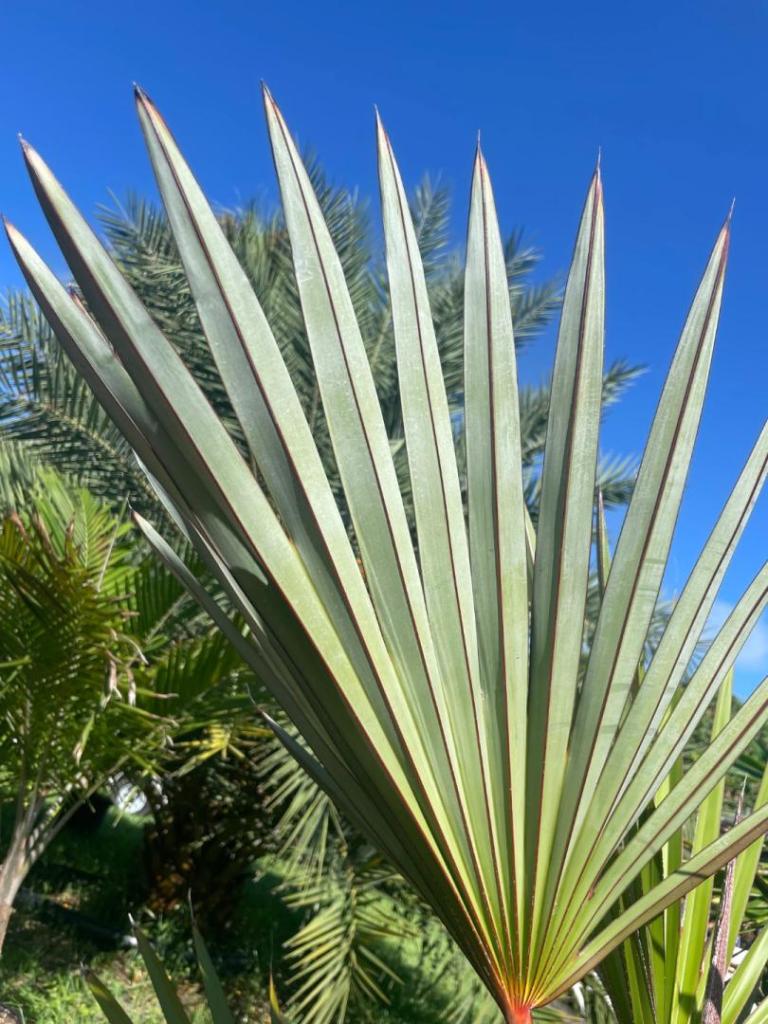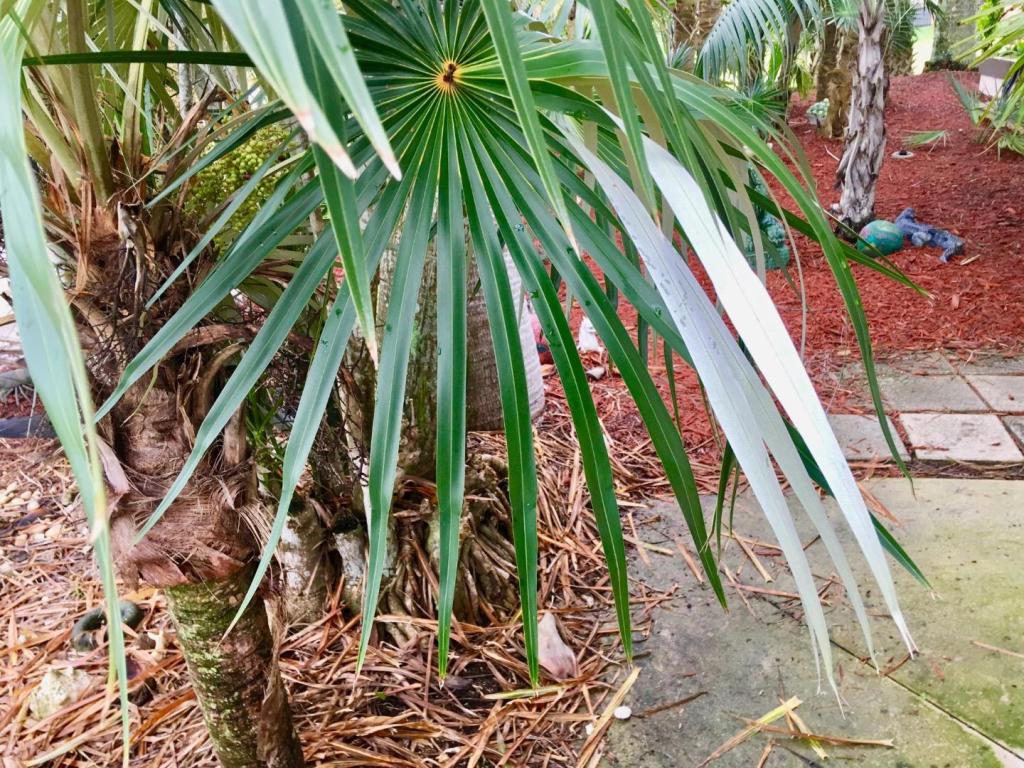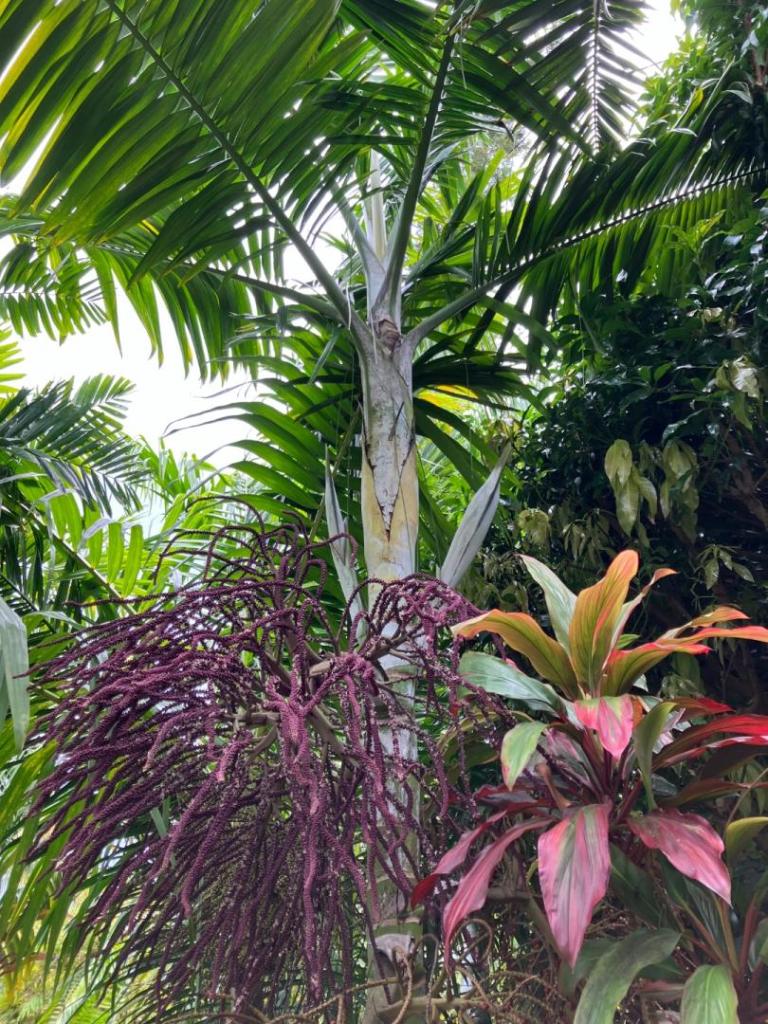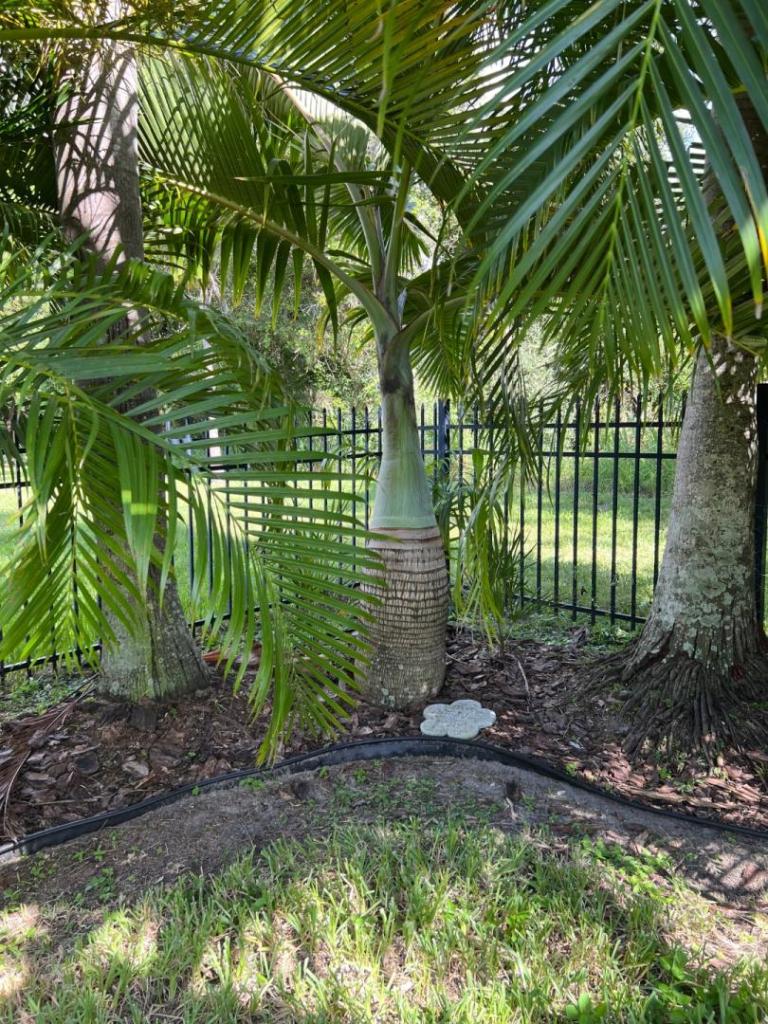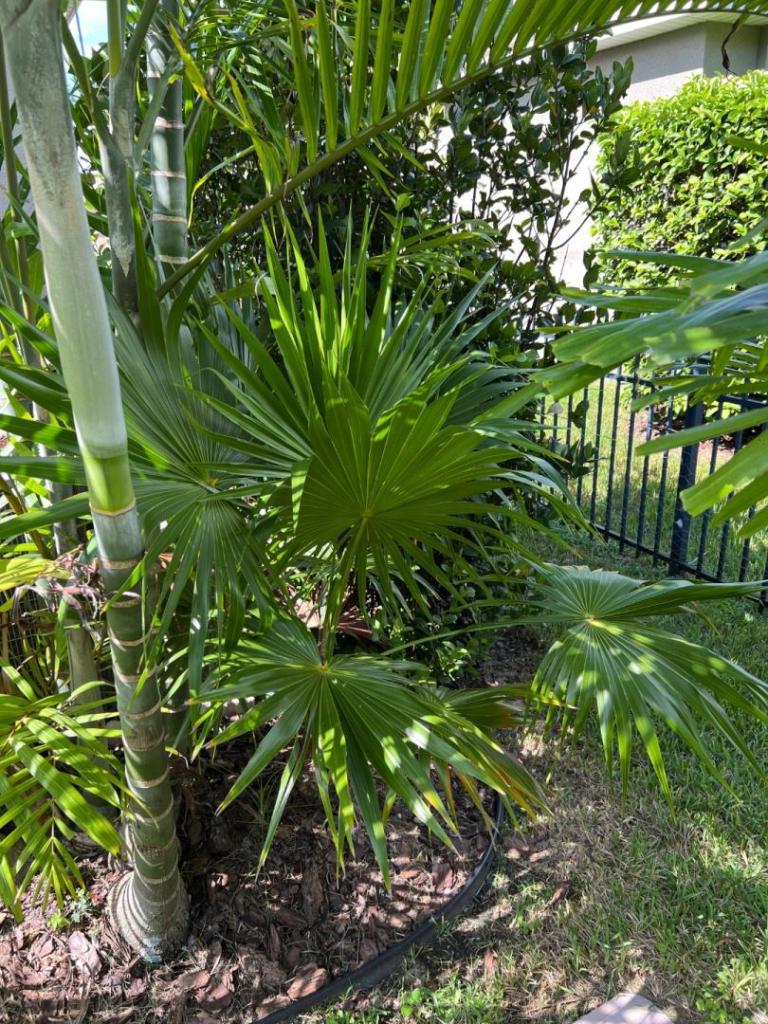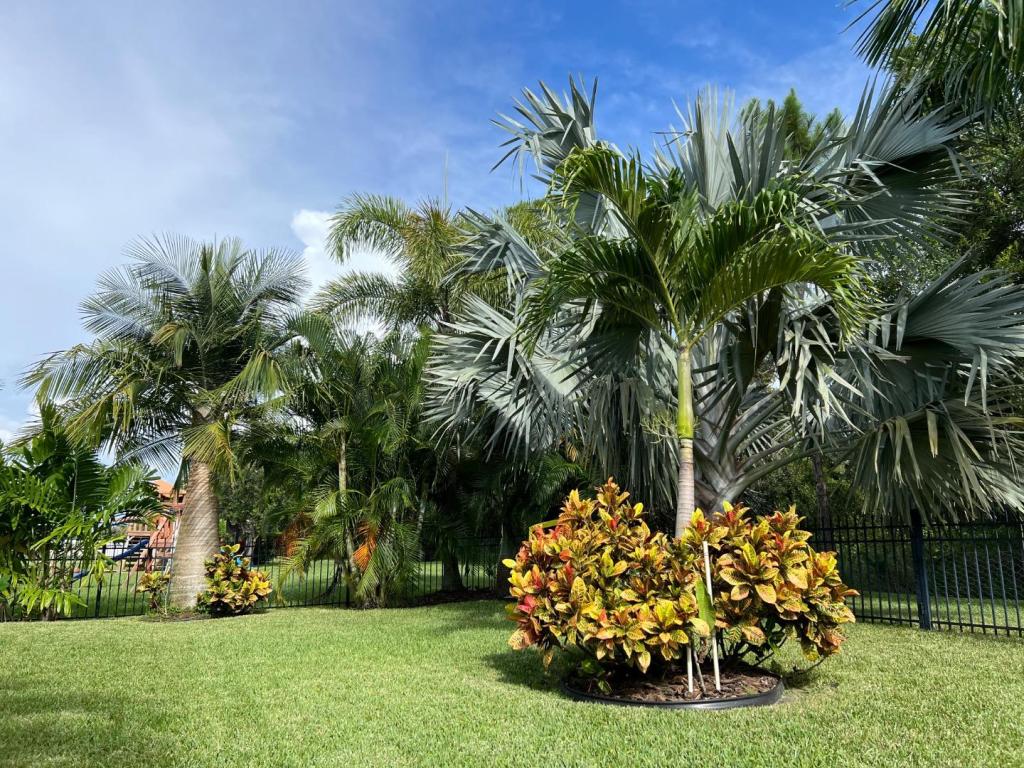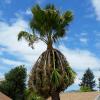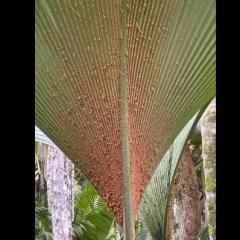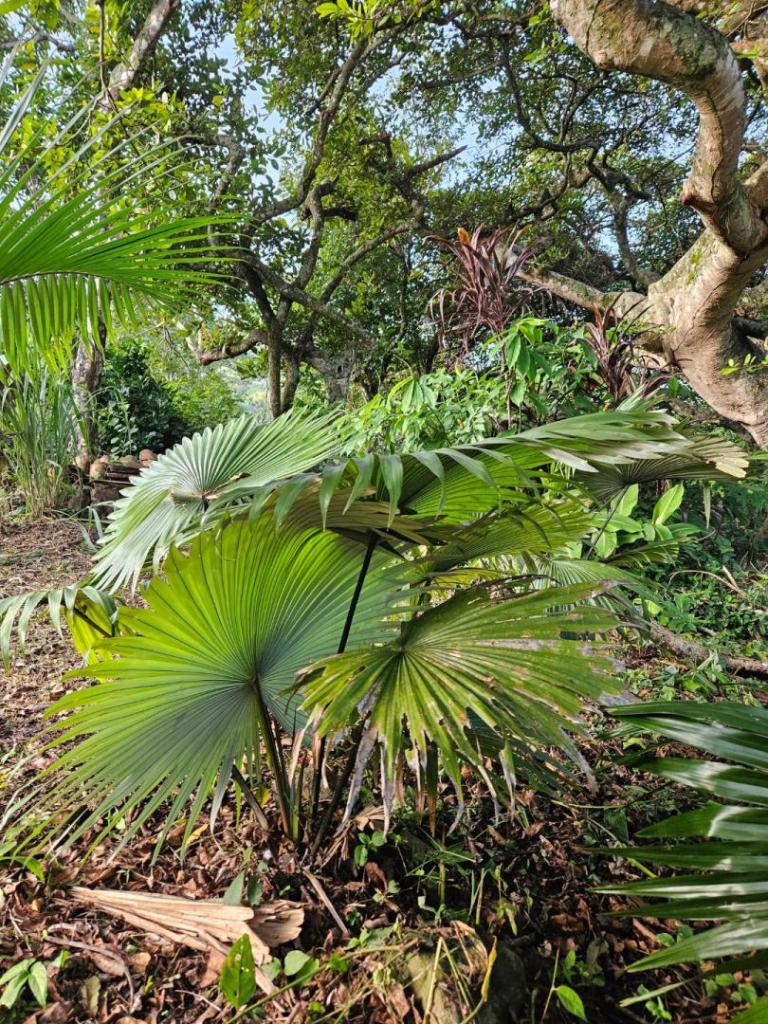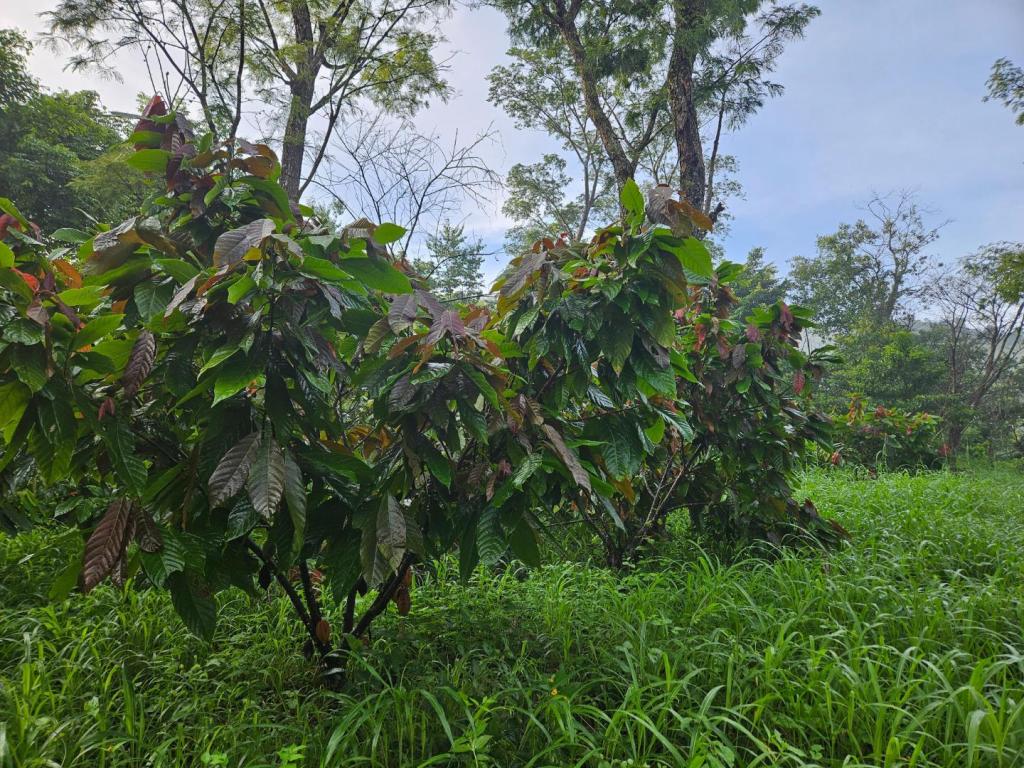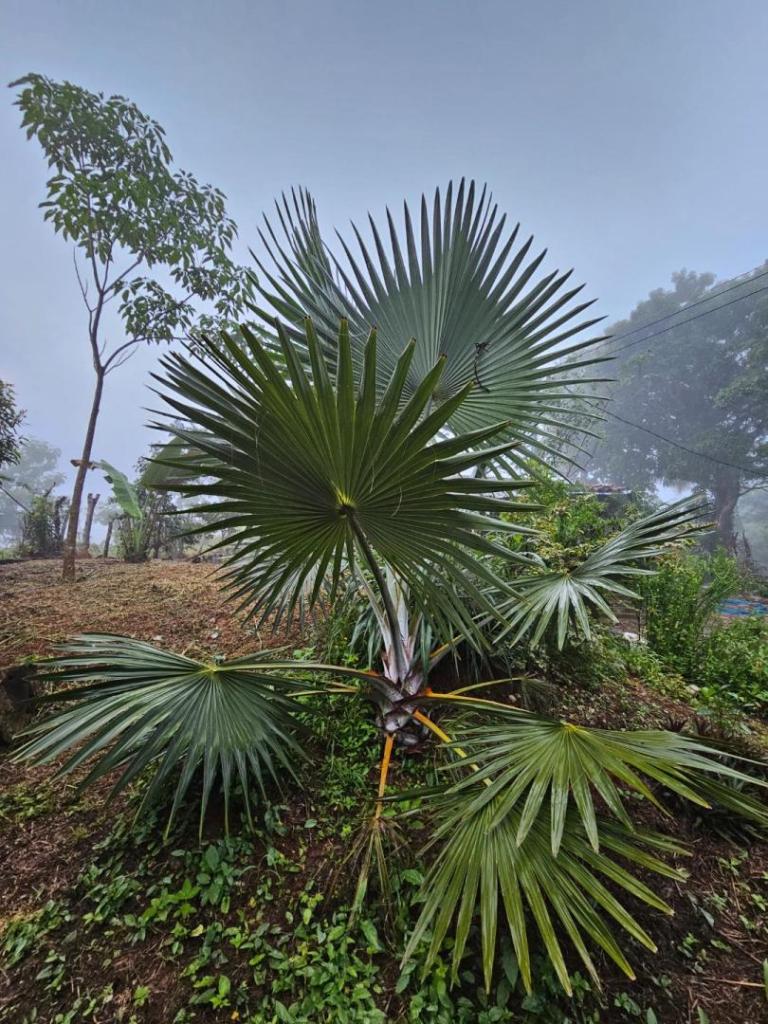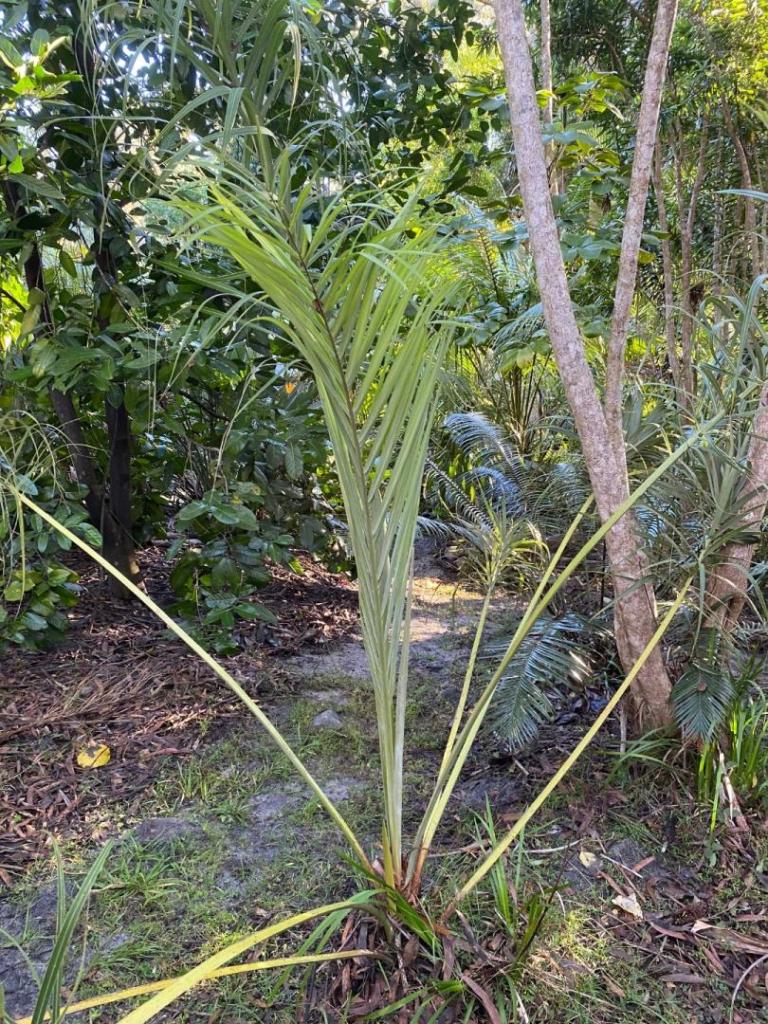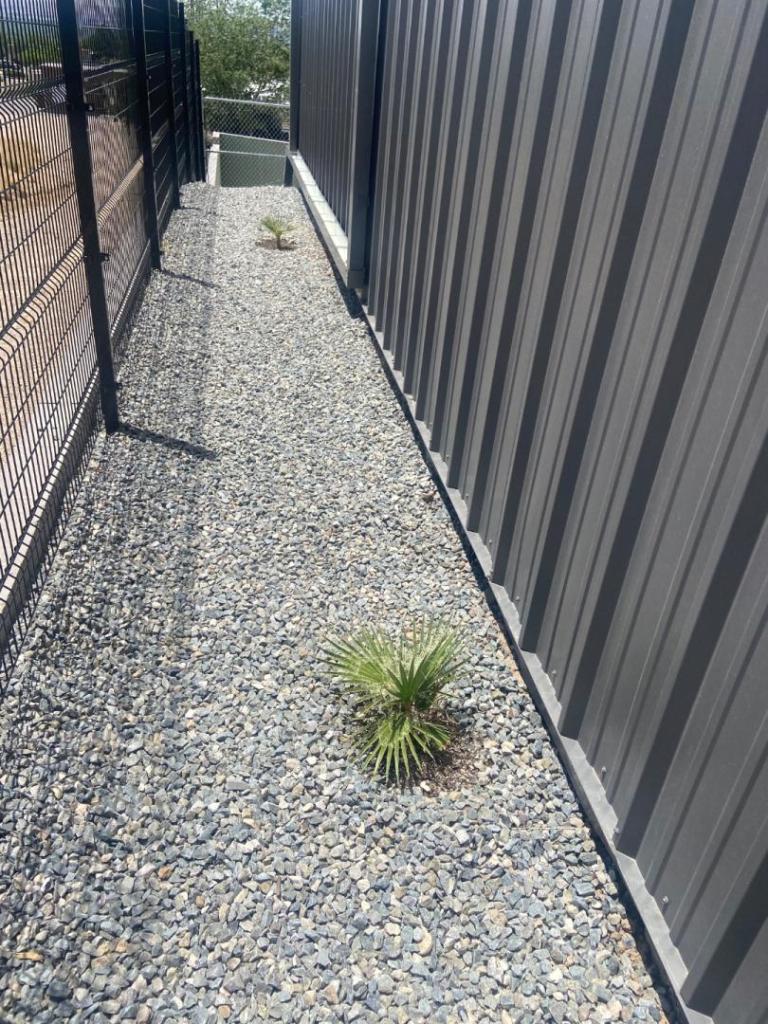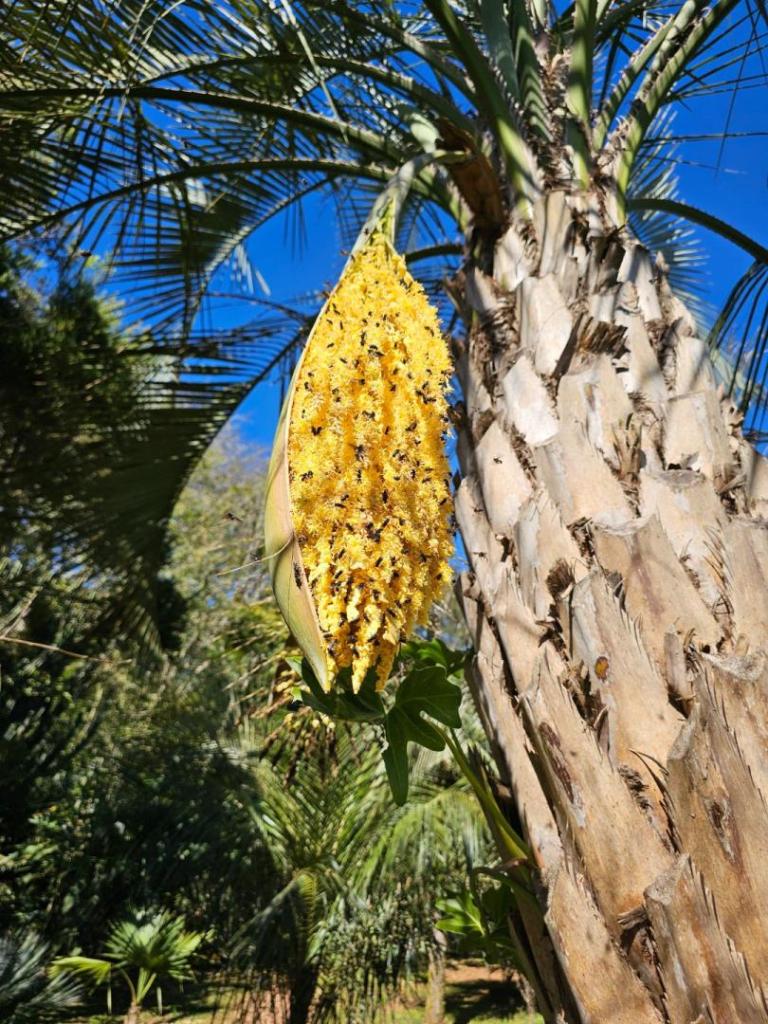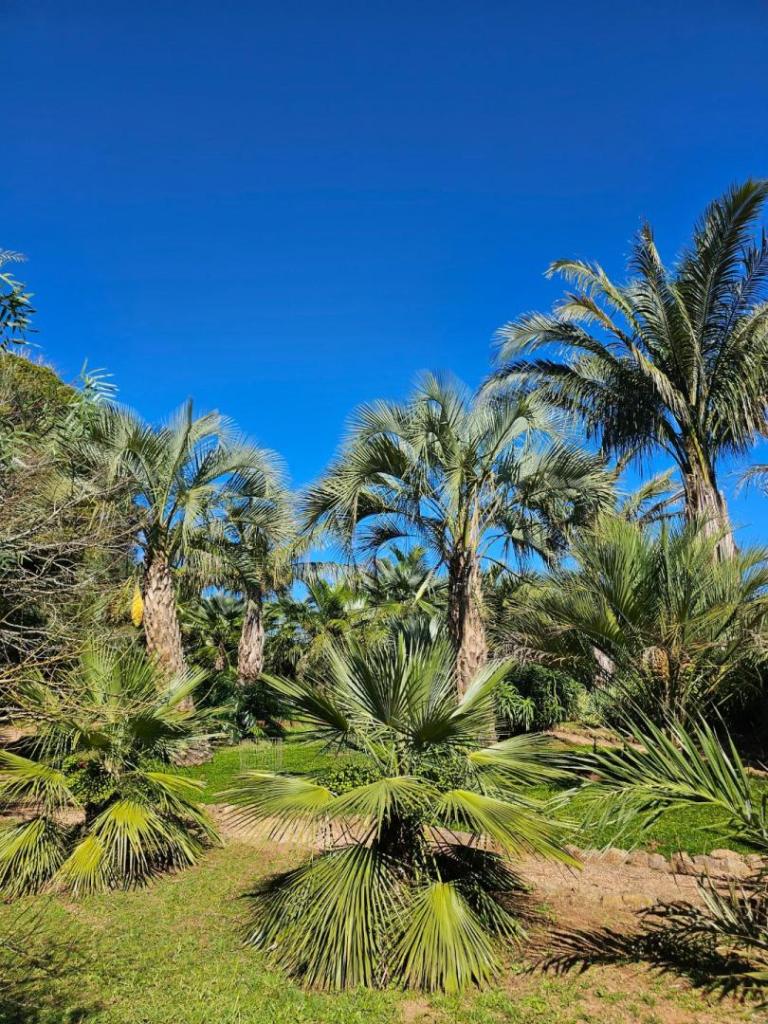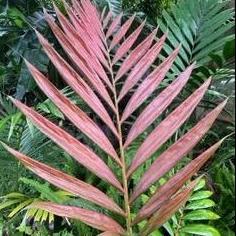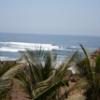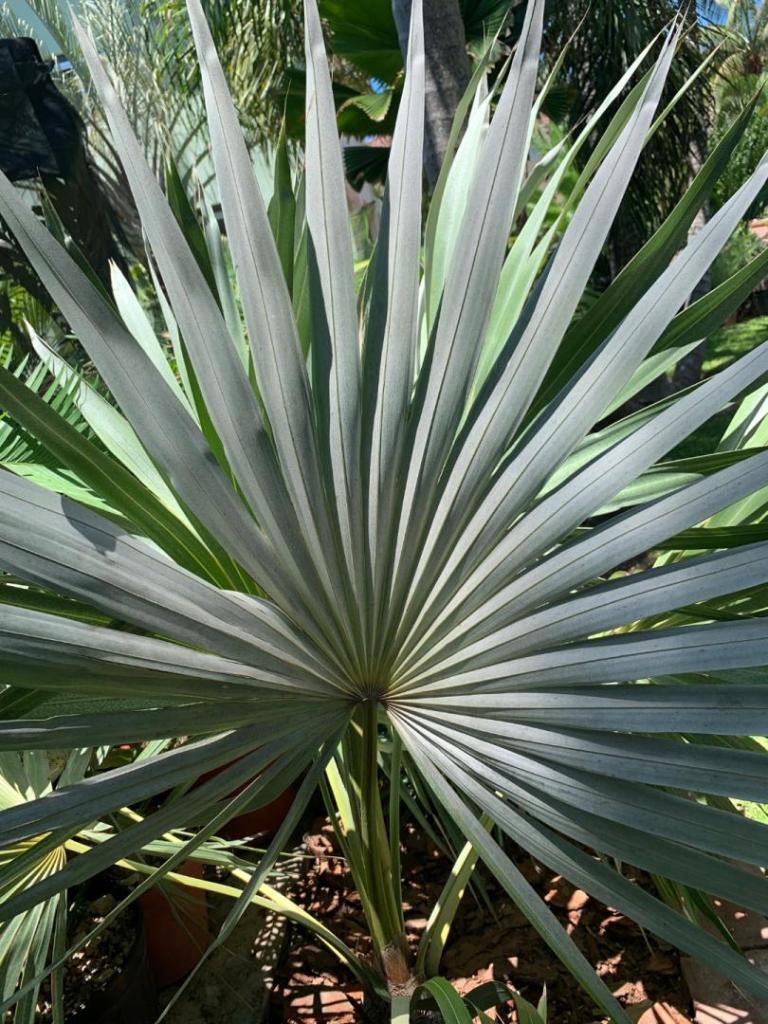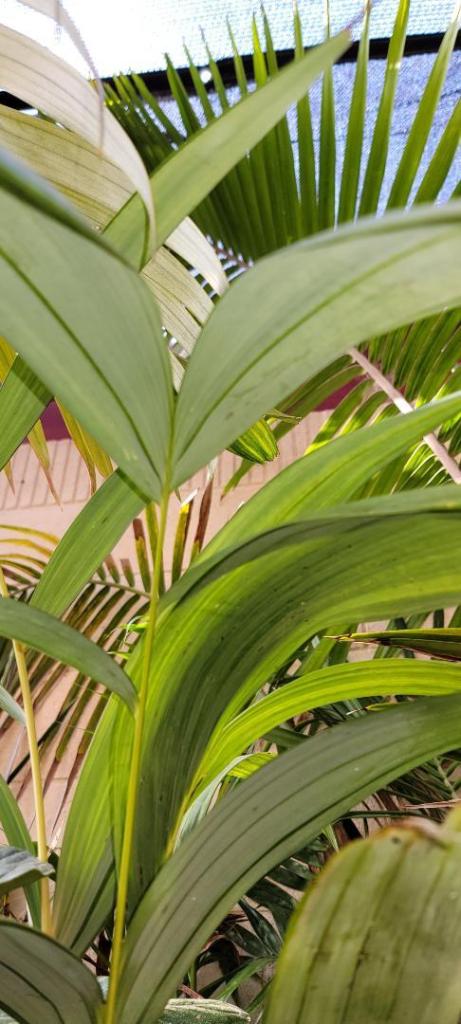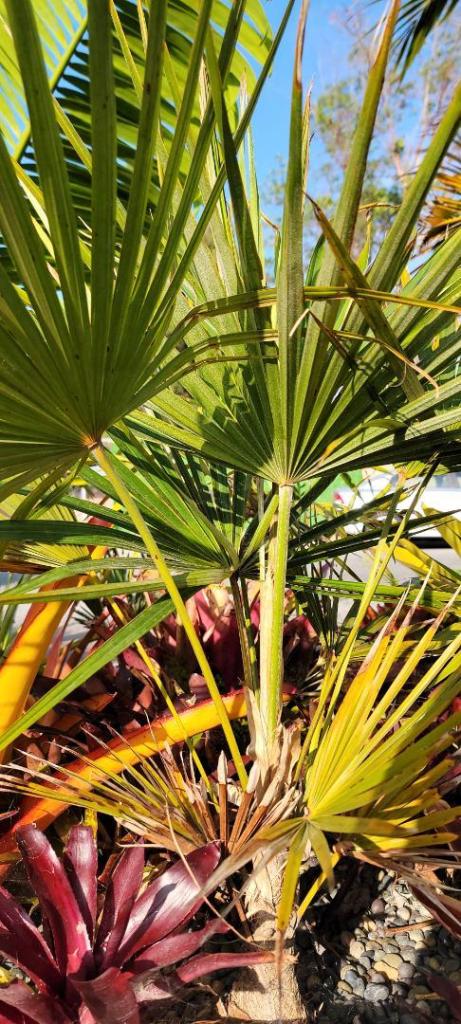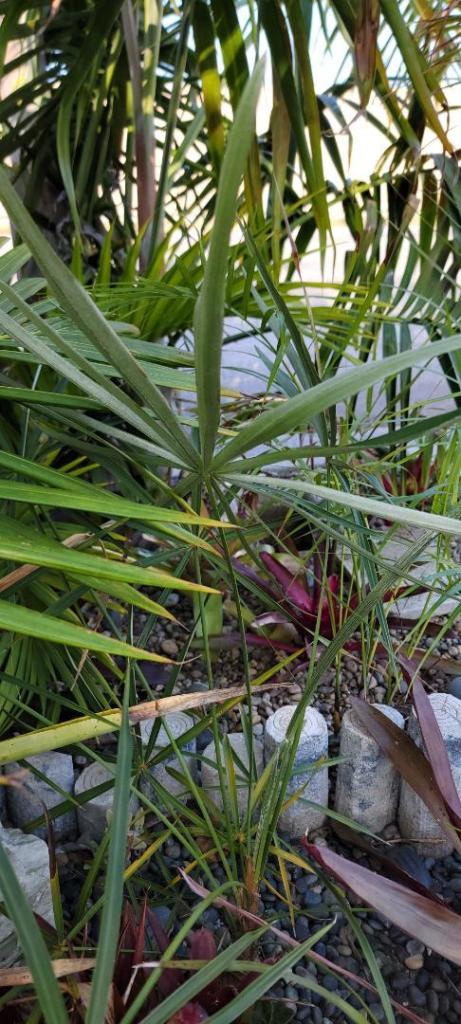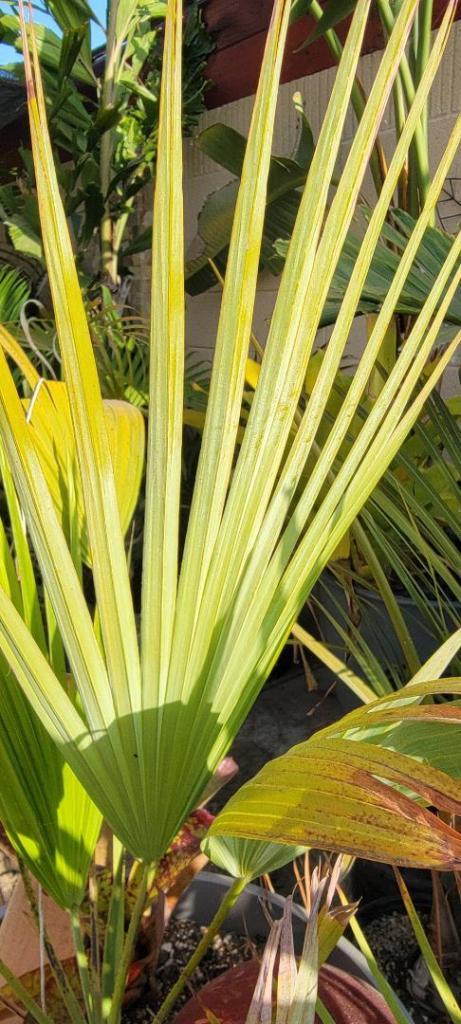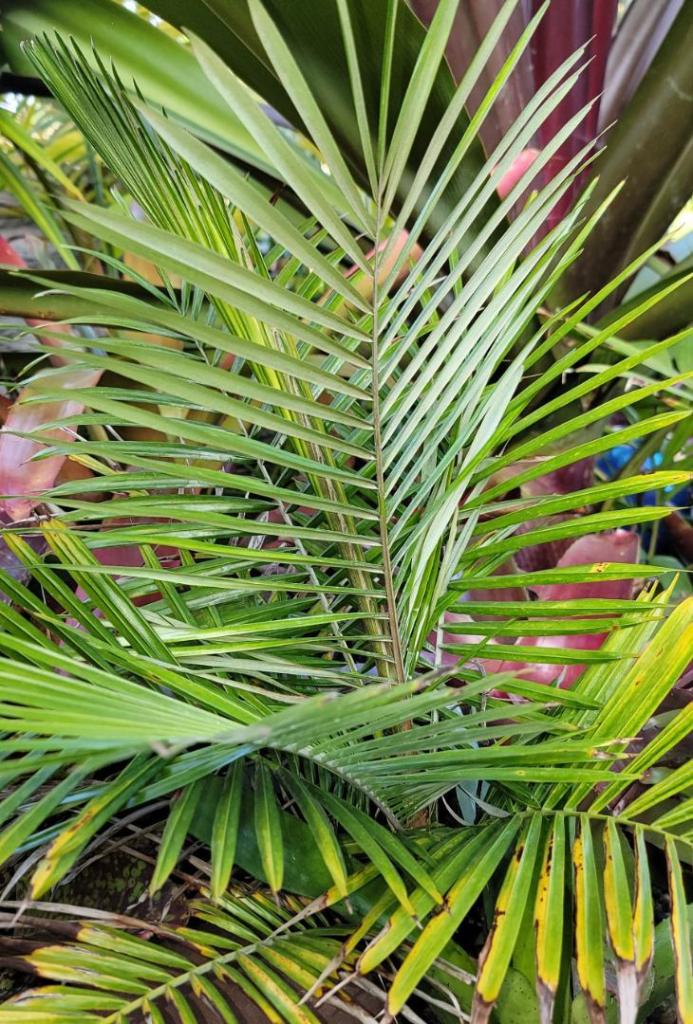Leaderboard
Popular Content
Showing content with the highest reputation since 06/27/2024 in all areas
-
I walked the Garden Lot around noon today and the heat and swelter were overbearing. I noticed my juvenile Tahina spectabilis has sent up several pristine leaves after growing little in summer 2023 or winter 2024. During Hurricane Ian in 2022 it was crushed by falling Livistonas and Bismarckias. I really thought it was a goner but gradually it produced leaves again from its underground meristem. Summer 2023 was hot and drought-stricken. We got less rain that rainy season than we got the previous winter. Winter 2024 was chilly, cloudy (94+ days of clouds) and wet - just what tropical palms hate and mine limped into spring with a lot of yellow cold-spotted leaves. But since the heat and normal rainfall have returned my beleaguered palms are happily growing again, my lone Tahina included Tahina spectabilis, Cape Coral, FL, July 202425 points
-
I'm 81 now and was in great shape until March when I came down w/shngles. Yea I got the shots and still got it. Then as that was clearing up something swelled up below and to the right of my belly botton. After an Ultra Sound, a CT scan and a MRI my Dr's said they don't know what it is but it's not a hernia or any cancer. Pain is gone now but still swollen enough that bending over to put on socks or shoes is uncomfortable. As they say getting old is a bitch but it beats the alternative. LOL Anyway back to palms....I can finally use my weed wacker for the first time in 3 1/2 month. Spent about 3 hours w/a lunch break clearing the "back 40" which is a triangle of land about maybe 2000 sq feet... Some day I'm gonna measure it. LOL. It's the are labled Plumeria Patch. None there now but 40 years ago I was selling the flowers until I realized it was a twice a day job 7 days a week so I quit doing that. That long straight boundary is 700' long. Oh yea it' 2 acres. Here are two photo's before and after. I'll add some of the palms up there. Not to many planted way back there. This is in the lower portion of the "patch" looking at the long straight white line.24 points
-
22 points
-
Excited to have added a Beccariophoenix Alfredii to the garden. Planted as a 25 gal. All rocks seen around the palm were dug out of the hole it was planted in lol. After marking the spear it’s grown almost an 1” its first day. These are not slow growers here where it will see daily temps of 90-105 in full sun. Look forward to having a yard monster in 10 years.21 points
-
Hi I’m new to this forum. I live in Ålesund in the western coast of Norway. Many of you probably think of polar bears, when you think of Norway. My town actually has the warmest winter climate of any Scandinavian city, and the city itself is in US hardiness zone 9a, here at 62 degrees north. My location is between 8B/9A, most years 8B, but with slightly warmer summers than in the city. The record cold the last 30 years was -10 degrees celsius, in 2010. The record high 34,4 celsius (little inland in the city). Winter days average at about 5-6 degrees with most nights above freezing. This winter had a min of -6/7 and high of 16 degrees celsius. Summer days highs average about 19 degrees, With normal range between 15-25 degrees. The huggets this far this year is 30,6 in my garden, which is unormal and a record high for the month of May. This have made several palm entusiasts try different exotics and Trachycarpus can be cultivated without protection here. Also European fan palms, but they May struggle in harsh winters. My Chamaerops has been unprotected for 3 winters. of us have also gotten us a Jubaea chilensis, which is very difficult to get here in Norway. Anyway, here are some pictures from my garden.20 points
-
in summer 2014 3 years later the leaves were getting larger and more numerous but height was about the same then another shot in 2017 a couple months after hurricane IRMA hit. It lost ~ 8 leaves on the lower crown. late 2017 after IRMA hit y 2019 it was starting to put on trunk. Not sure that was delayed or accelerated due to the hurricane hit. Leaf bases were falling off no assisting them. here in 2021 a year before IAN Then IAN hit and it lost a dozen leaves mostly to windward and quite a way up the trunk, (asymmetrical losses to windward) I didnt take a lot of pics of the damage, I want4ed to forget about it. The damage it has sustained was from cat one max 97 mph gusts with 80 mph sustained for 3-4 hrs. This morning the palm shows 10' clear smooth trunk @28-29" diameter (all the way up so far) and about 13-14 foot trunk including dead leaf bases. the crown is not fully recovered but it is doing well. The thorns on the petioles of the newer leaves just shred the older leaves in this kind of wind.20 points
-
20 points
-
19 points
-
My Pritchardia thurstonii is looking stellar this rainy season. It has almost doubled in size and sports large emerald green leaves. Fast reverse into late last year when I walked past it and saw to my horror that it was coated with mealybugs and probably scale too. They likely were days or a couple weeks into eating it straight to the compost pile. One of the worst mealybug infestations I've ever seen in person. I dashed indoors to shave a bar of ivory soap into a bucket of water, then dashed back outside with soap solution and a couple of soft cotton cloths. I spent the rest of the afternoon gently sponging soapy water onto every inch of that palm and into the crown. Next day I repeated the process. And the next day. And the next. It seemed like no sooner did I eliminate one brigade of bugs then another appeared the following morning. By the time I killed off the palm sucking horde my thurstonii was in chewed up tatters. Still, it survived and here it is today. It still has a tattered leaf or two from its ordeal at the bottom of its crown. Pritchardia thurstonii, Cape Coral, FL July 202419 points
-
Hey everyone, hope everyone is having a great growing season! This is my annual NYC palm post. This palm just keeps growing. It grows all seasons (including winter) im guessing it's at least 15 feet? My daughter is 5'6. I've seen other windmills but they where in a greenhouse in the Bronx botanical garden. If anyone has some pics of there east coast palms please post.. thanks in advance... Bobby18 points
-
17 points
-
As summer and the heat arrived to Hungary I will post some pictures of my garden 😁 Palms and plants that I have planted outside: Phoenix canariensis Phoenix Sylvestris Butia Capitata Brahea Armata Sabal Palmetto Trachycarpus fortunei Trachycarpus fortunei x takil Chamaerops humilis Syagrus Romanzoffiana Rhapis excelsa Washingtonia Filifera Cyathea Australis Dicksonia Antarctica Cycas Revoluta (and another type of cycas which I have no idea how is it called) Lots of type of yuccas, agaves, alocasias, colocasias and others 🙂17 points
-
17 points
-
17 points
-
17 points
-
17 points
-
17 points
-
Sabal uresana, commonly known as the Sonoran palmetto is a species that is native to the foothills of the Sierra Madre Ocidental in northwestern Mexico. It's habitat is very dry and I had concerns if it would thrive in my not so hot and year round humid subtropical climate ( 1600 mm rain/ year). I have two planted out in the garden. One grew better then the other. The young leaves are blue but the wax is slowly removed by the frequent rains.16 points
-
16 points
-
16 points
-
15 points
-
15 points
-
15 points
-
We bought a 40 acre piece of land in Panama 18 years ago, it was scrub and cow paddocks, of course this was an incredible chance to go mad, which Michelle and I did, Michelles fruit trees and heliconia's, and my Palms and bromeliads. I collected seed and plants from everyone and every where we went, plus from people I had known and met all over the world .This is the result of 18 years growth. we have a distinct wet and dry season quite a few have reached for the sky quickly some are slower,.What we did was start planting in different areas , there were a few areas that had some very old Acrocomia specimens, they were a problem as they are very spiny and untidy but have a great shape, so we radiated out from them, we also have native American oil palms(Elaeis oleifera) which have the habit of a crawling along the ground trunk. So as the collection of plants grew we expanded out. I planted our Cuban collection on the bank , which I think every seed grew , now its a forest of palms full of snakes, I also planted about 50 Corypha Utan which have gone mad, but impressive .So we left just before covid and have been away for a few years, My son says it looks like Jurasic Park. So I am looking forward to see how things have grow or maybe died.15 points
-
I moved a large patio umbrella that we rarely use and leave stashed on the driveway with a cover on it. After moving it forward, away from our gate, I could get an improved photo angle of my largest palm growing as Ravenea julietiae. It's still hidden partially behind that potted Macrozamia communis, but one can get a decent sense of its size and structure. Its still a long ways away from forming any trunk. The new perspective was what has been drawing my attention to it the last few days.15 points
-
15 points
-
Well you had a longer running time than me. Diagnosed with MS in my early 30's that put me in a wheelchair not long after, I used to get someone to dig all the holes for planting palms. Now I am in a new house designed for wheelchair occupancy, I get on my knees and dig my own holes with a little camping spade. Then cancer surgery about 5 years (I think) ago., then a double mastectomy last year. Just when I thought it was as bad as it gets, my spine decided to imitate a roller coaster so now I can't lift anything heavier than an overfed chihuahua. Now I move plants and potting mix etc in a little cart attached to my chair with cable ties. Now I am at the time of life when I should be browsing the catalogues for comfortable coffins and burial plots with a nice view, the cost of living crisis has forced me to go back to work just to survive. On the plus side, I like my little house and the pretty things in it. The Poochies, Pussies, Parrots, Palms and Potted Plants give me a reason to get up in the mornings and reward my nurturing efforts threefold. Shingles is on my list of terrors, along with a stroke or early onset dementia. I too had the vaccination and felt safe until 20 minutes ago, ya bum, however I survived the pandemic without catching Covid so hopefully I will dodge shingles as skillfully as I am dodging the coffin. Peachy15 points
-
Palm enthusiast for 22 years here. I think we should love all palms. They all have a place.... but in the right place! I see all sorts of bashing of Syagrus Romanzoffiana (Queen Palm) and just had to address this overly saturated but misunderstood palm thanks to places like Home Depot. I always go back to Syagrus Romanzoffiana, yep. Sounds odd. But I dare you to find a palm species that can imitate the exact swaying of the fronds in our calm breezes and so stately, yet graceful. This beauty native to Brazil, Argentina and maybe some other places, is simply the best which is why it is saturated. Yes, super messy heavy seed pods, not self cleaning. If people would be more prepared to take care of them properly, and plant them in the right place and not 3 feet from their house, they are one of the most beautiful palms that stand the test of time. I see all sorts of Syagrus Romanzoffiana issues and bashing but then I look at their zones. 8b? 9a? 9b? People trying all crazy things because they sell them at various Home Depots and Lowes even in the High Desert, zone 8a!! What?? 10a + only for these palms. They are not cold hardy, not desert plants and don't like temps over 85, like average humidity only (50%), and certainly not drought tolerant as marketed, if you want them to flourish and look amazing. Yes they need supplemental ferrtilizer but what palm doesnt. You should not be ashamed if you are an enthusiast but still love the Queen. And this palm will thrive in clay soil btw. Long live the stately, elegant, graceful queen! I bet there are many Queen lovers out there so I would love to hear from you! Lets get the Queen back where it should be, and that is respected. Thank you very much14 points
-
Nothing like summer to spur significant growth from these beautiful palms. The older two have grown under canopy and are tall and thin. The younger one is in full sun, much more robust, and it’s not uncommon to drop two fronds at the same time coming out of winter. Clean, colorful, compact, just a great garden palm. Tim14 points
-
I do think collecting palms is an incurable disease, I have had it now for almost 40 years , it began 11 years after I developed terminal orchid syndrome , I have been fortunate that my wife is a horticulturist like me . so we can share our love of plants .As we have travelled the world we have collected seeds and plants and started our garden In Panama. How you start your palm journey is find the seeds, plant the seeds and start planting them when they get big. we have planted over 5000 palms , some have done well others died , Its experimental , just like life, Here is my my prop area , Its a tempary one while I construct a new bamboo structure, We collect the seeds , clean them , some we soak and put in plastic bags and hang them up to germinate them .others we plant in shallow trays , it depends on size.The last photographs are of me finding a young Desmoncus orthacanthos its a native climbing palm , very similar to Calamus .The palm grows up through the canopy , covers the canopy..14 points
-
14 points
-
14 points
-
14 points
-
13 points
-
13 points
-
I thought this palm history was worth a story. I bought a copernicia fallaensis from Ken Johnson and sons in late sept 2011 and dug a huge hole for it, 5'+ across. I dyug the hole an extra foot deep and amended that last foot of depth with half sand with the native clay the builders put near the streets to support it. put extra sand beneath the palm. Here is the holle I dug with the ammended mix refilled under the palm Ken arrived and he and his son unl;oaded the palm and planted it with a 2500 lb bobcat. The rootball was limestone rock and it was too much weight for a 1500 lb bobcat. In the ground as of sept 19 2011.13 points
-
13 points
-
13 points
-
13 points
-
Every time I visit our chocolate farm in El Salvador, I try to take seedlings with me to plant there. I also have sourced non-palm plants locally (Couroupita guianensis, Delonix regia, a number of different Handroanthus, Ceiba, Mahogany...but the selection of palms locally is pretty slim. We are in the process of planning a new home construction (and the rest of the acreage is cultivated) so I don't have a lot of confidence with planting much yet - I don't want to end up having things ripped out or damaged when it comes time to build - but I have planted a couple of things over the last few years which seem to be doing ok with no irrigation. The dry season here can be brutal. I hope to start brining in some really exotic species once the house is built and we have irrigation in place. This is a really wonderful property and I have a lot of space to play around with. 20240703_052837.mp4 This is some of our heirloom cacao. Tested by USDA and confirmed criollo (of the 10 or so identified genotypes, criollo is the least common but occurs naturally in Central America. We found this particular variety growing wild in a nearby canyon and have cloned a whole lot with it. I like the maroon color on the new flush. First are these kerriodoxa - I planted two and both are going great! they are under a giant Ficus inspida (I believe). Then we have a duo of Chrysalidocarpus leptocheilos. Really excited about his one, as I have not seen these here anywhere. This, I believe, is Livistona saribus A bismarckia nobilis And a few Ravenala as well.12 points
-
12 points
-
My arenaria is flowering again it does set viable seeds that I have germinated before so hopefully this one will set some more seeds again it is a rare palm in my area but only a collectors palm not really up there with the bangalow golden cane buyers list oh how the public need education on exotic plants.12 points
-
Wanted to share two pictures of my filiferas I planted back in July 2023. I sprouted them from seed in my greenhouse in fall of 2021. They both had trunks about the size of my thumb and were less than a foot tall. They are planted way too close to my building but face due south and get rainwater from canales above. Hindsight I should’ve planted them right in the middle but was worried I’d never be able to walk around them ( still prob won’t be able too soon!) Exactly one year later the fronds on the palm are up to my shoulder and I’m almost 6 ft tall. I water them deeply twice a week in the summer and use palm gain fertilizer twice a year. Can’t wait to see how much more they explode by end of the summer!12 points
-
12 points
-
12 points
-
12 points
-
12 points
-
12 points
-
12 points


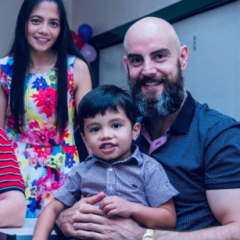


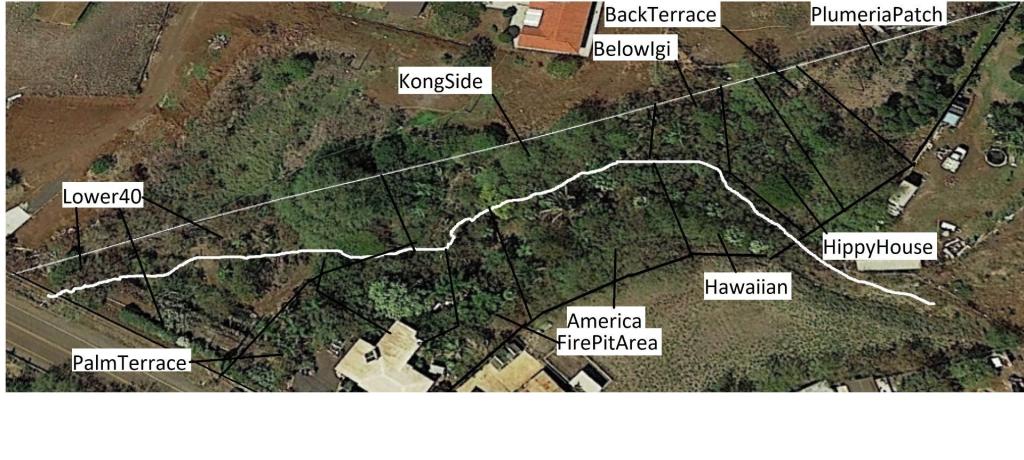
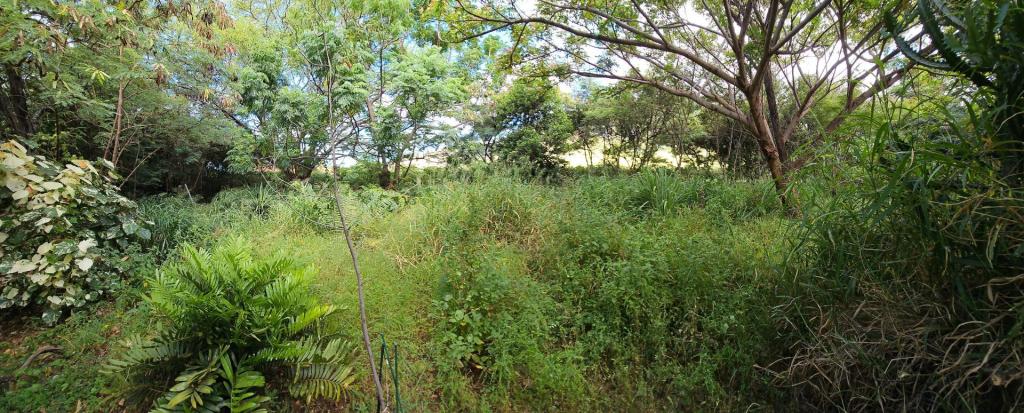





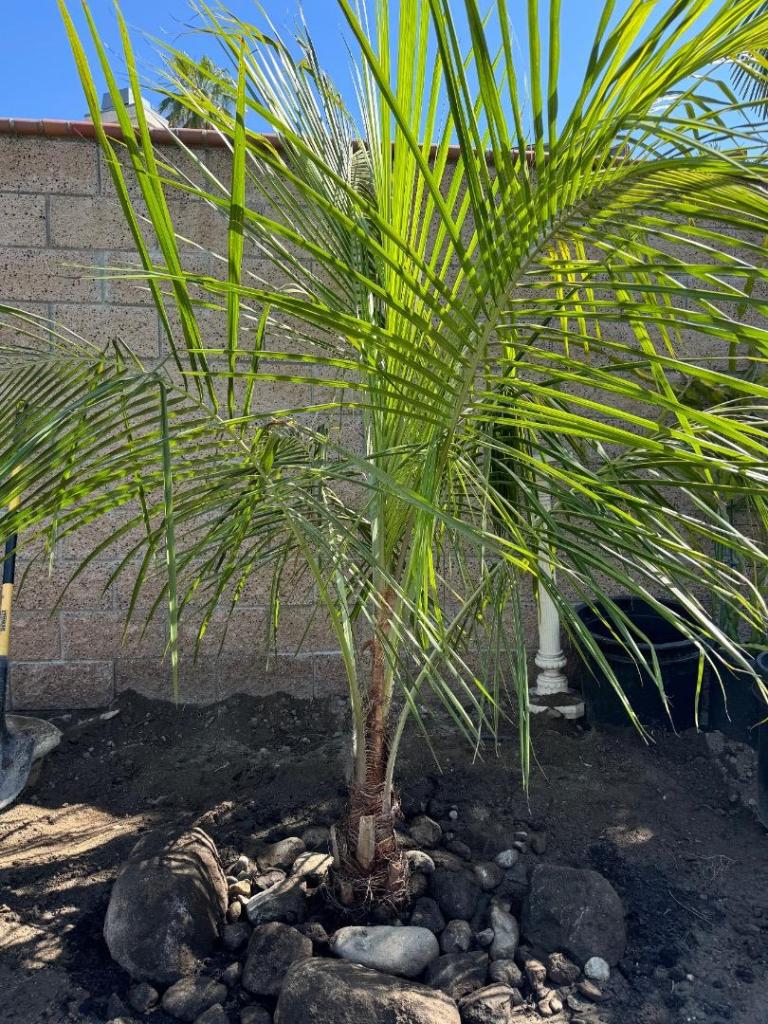








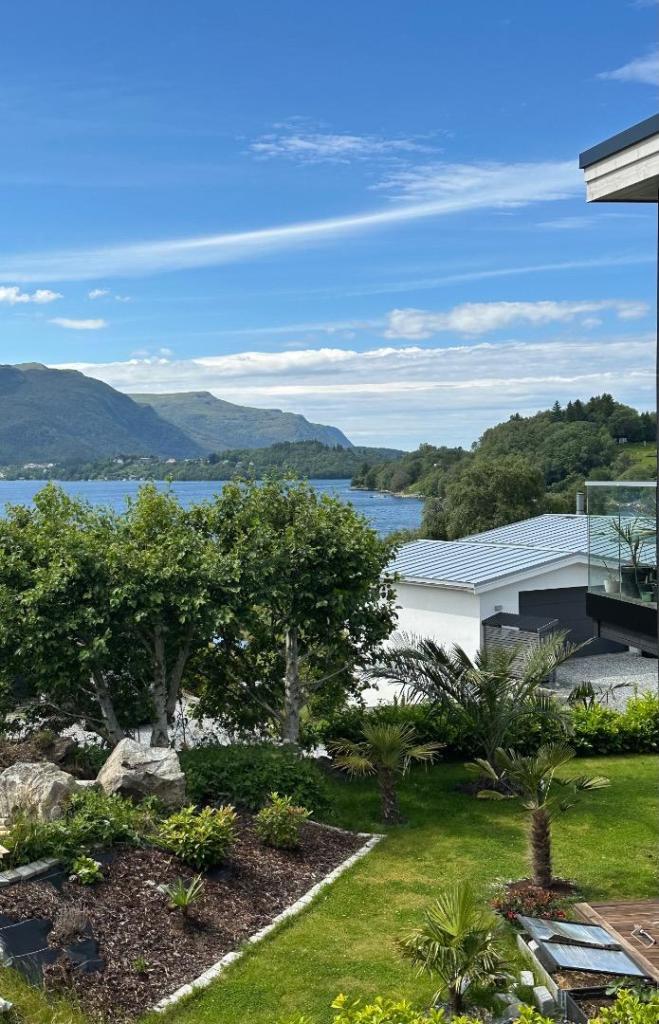





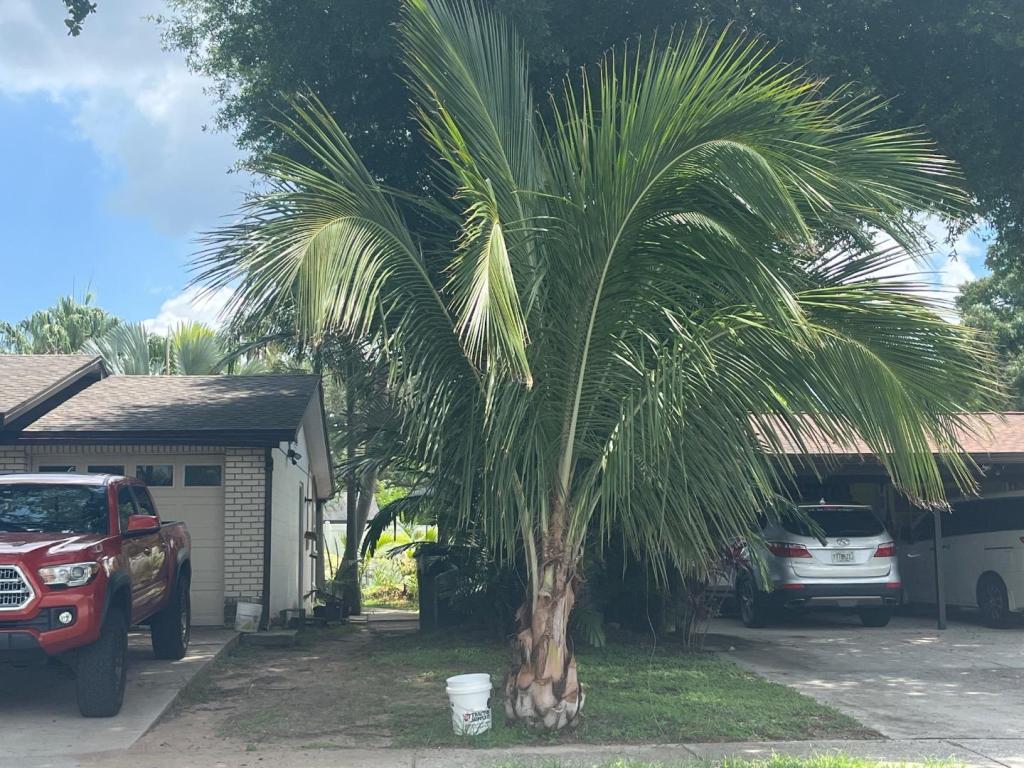



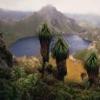

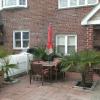










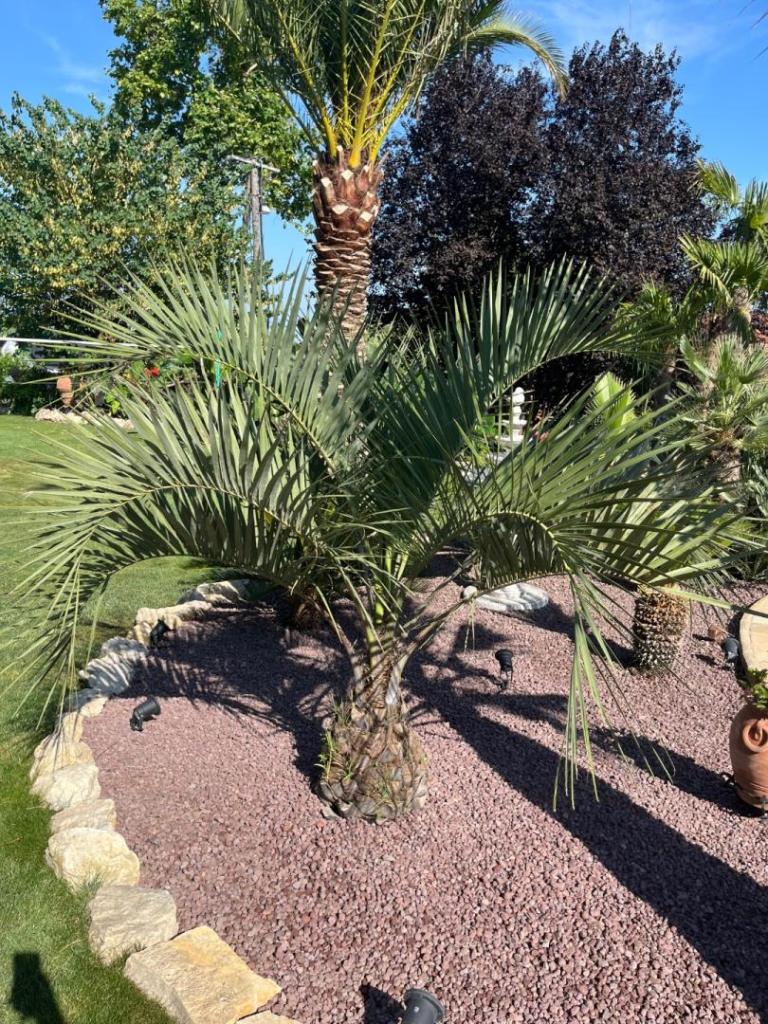




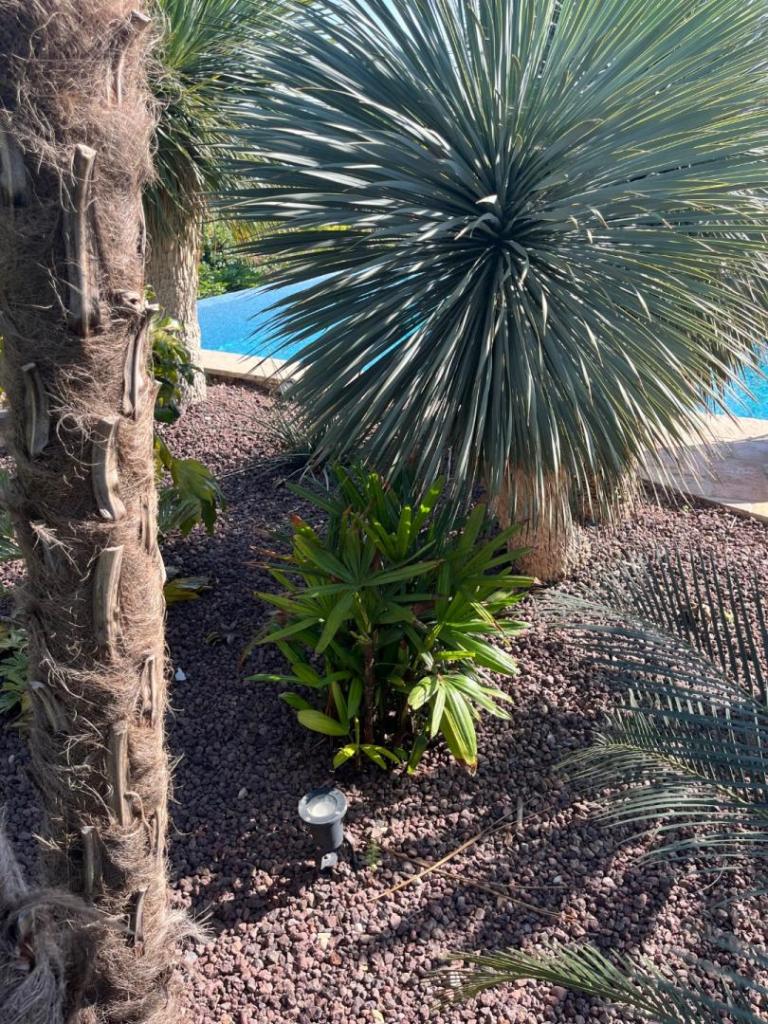

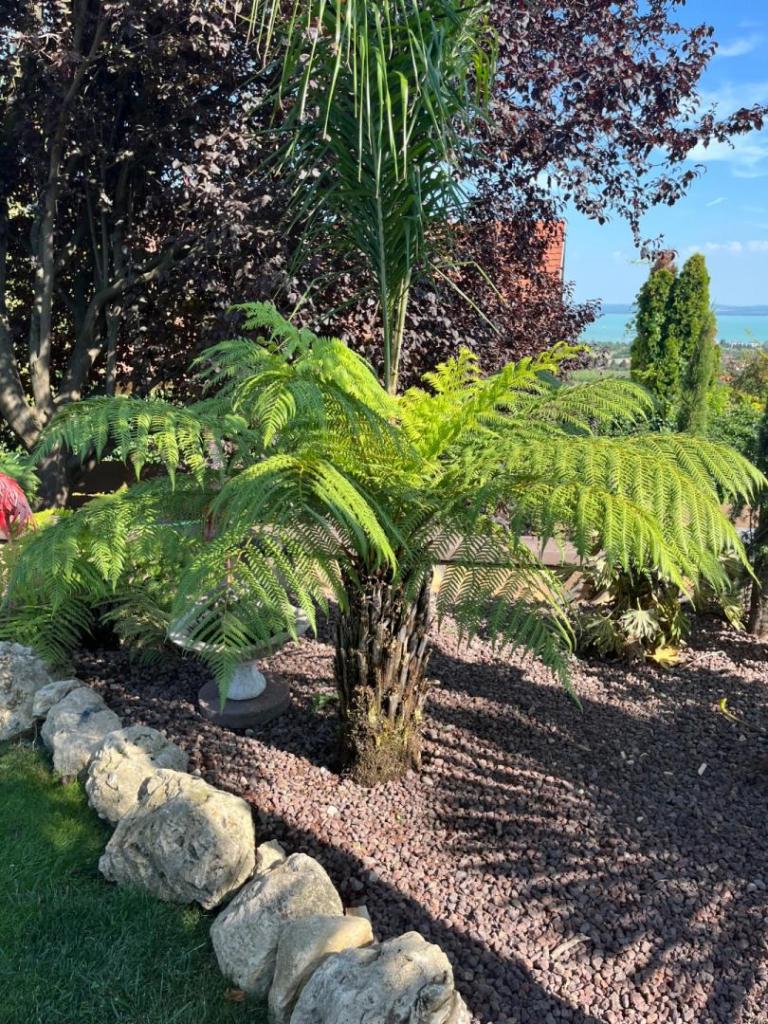

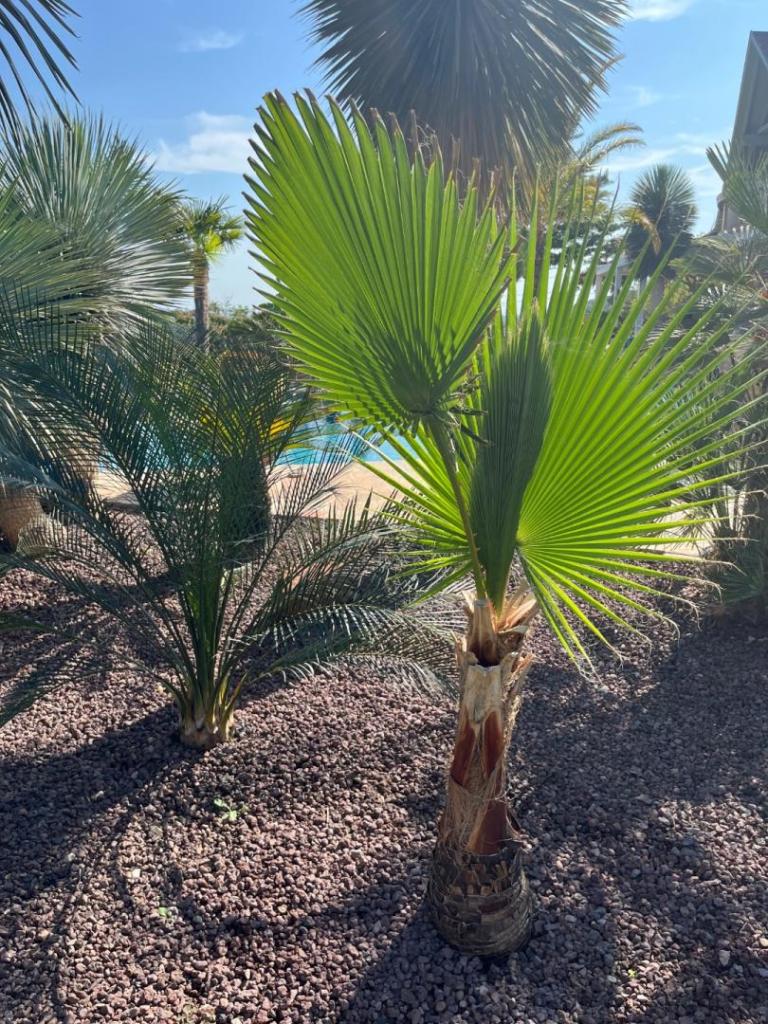
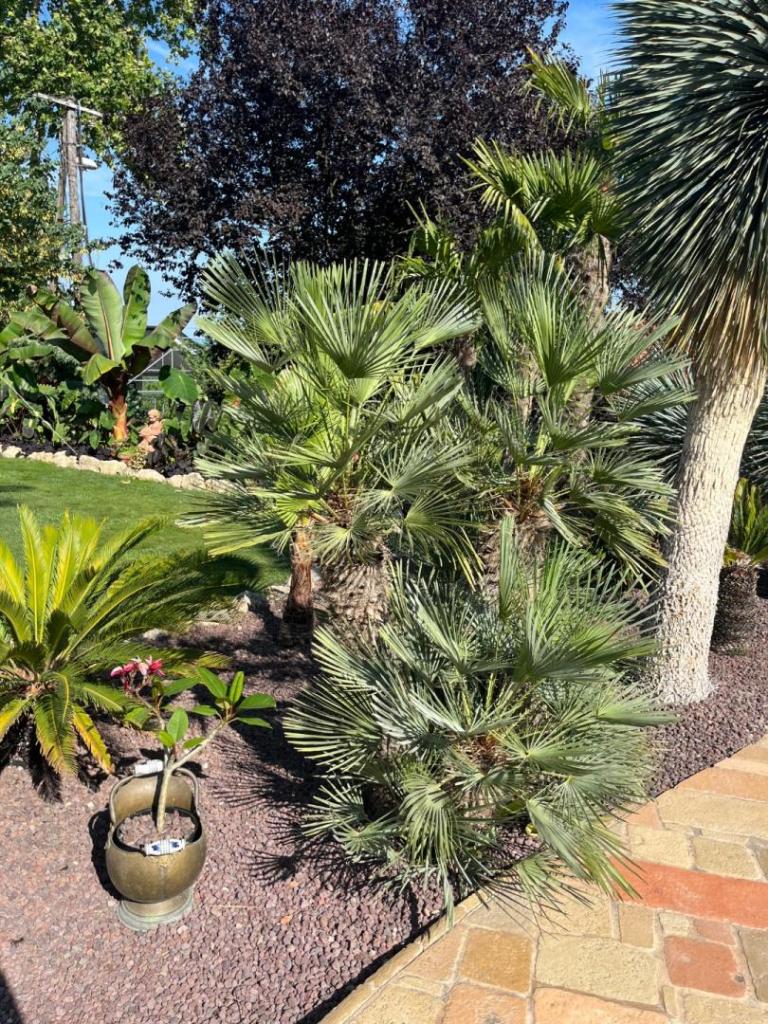








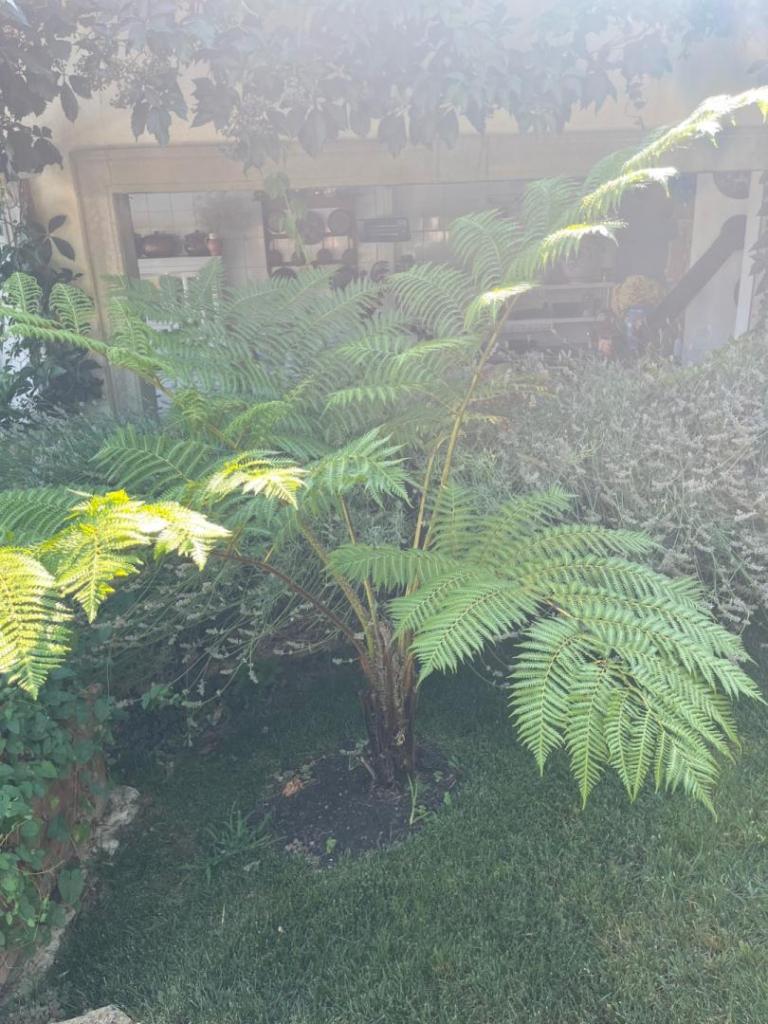





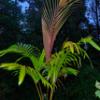




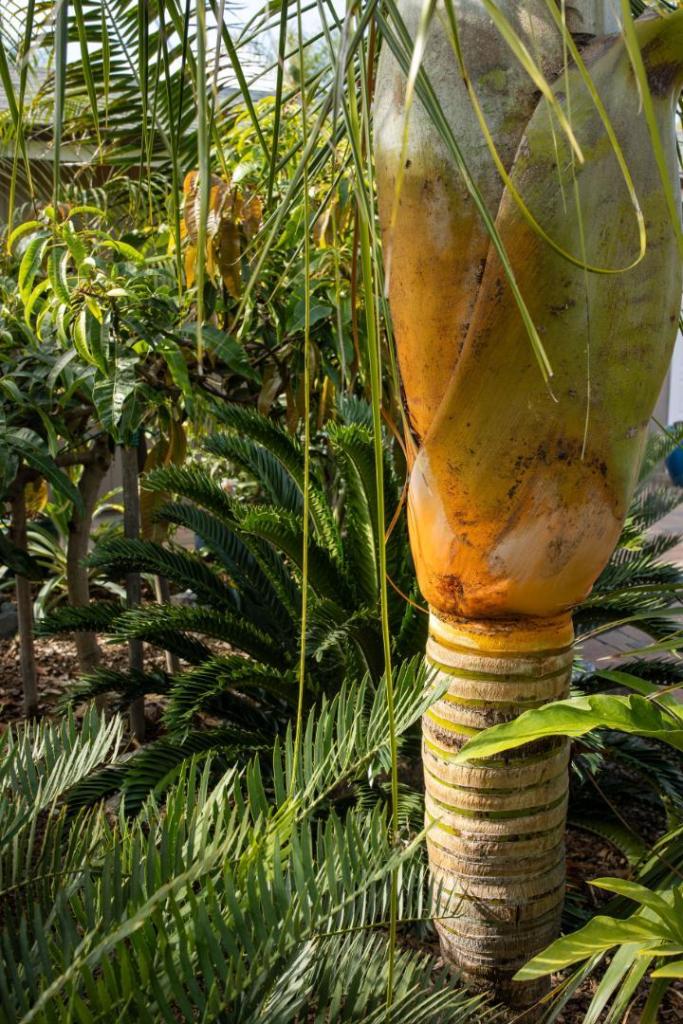
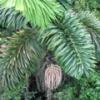
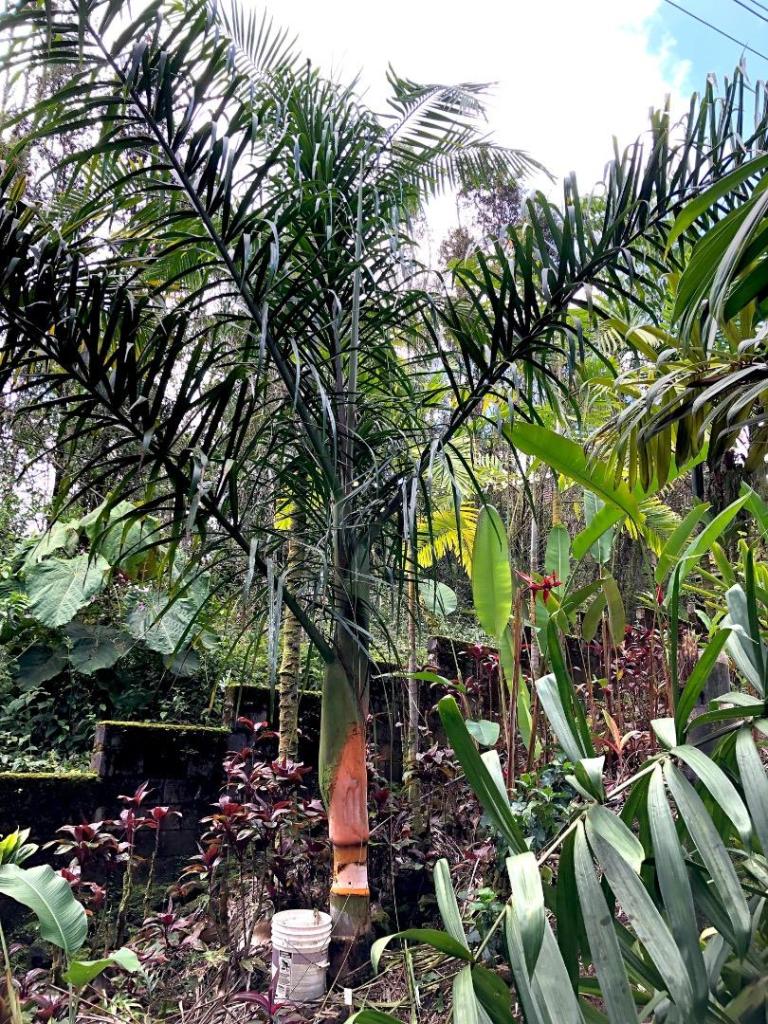


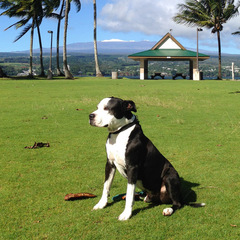



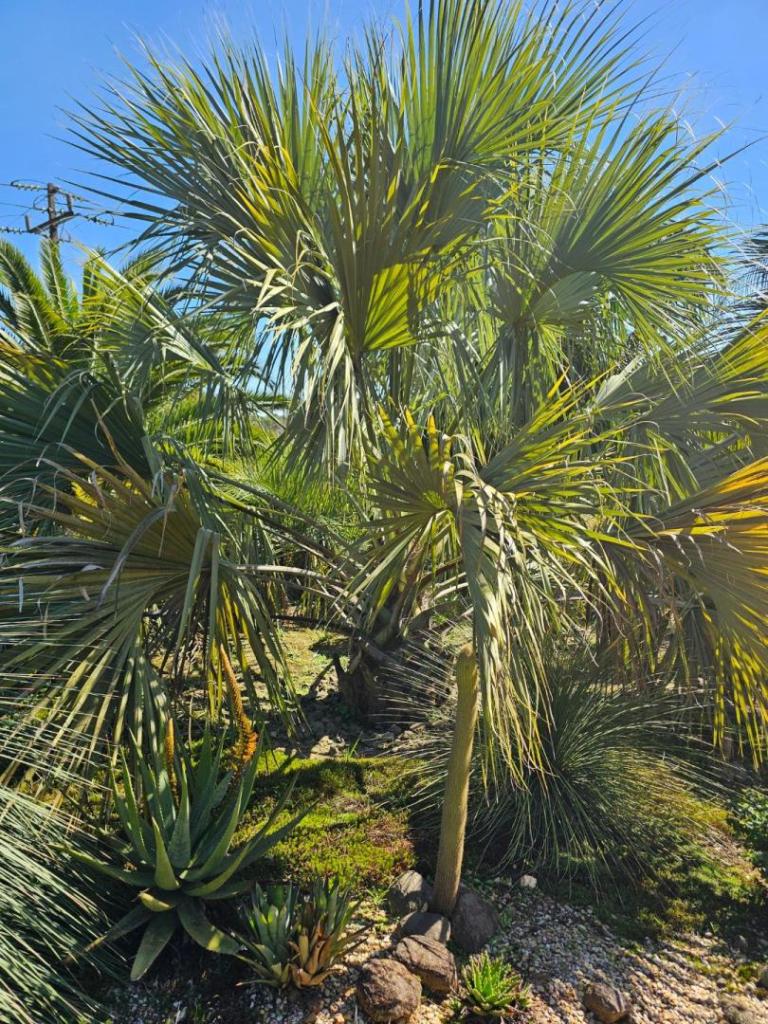
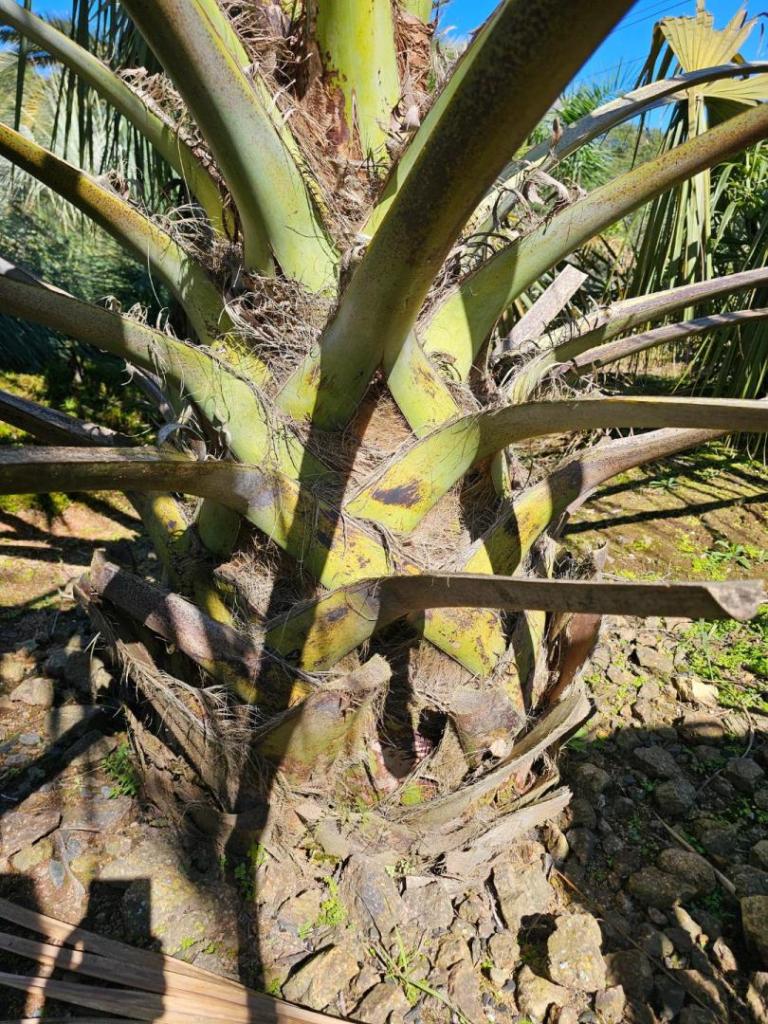




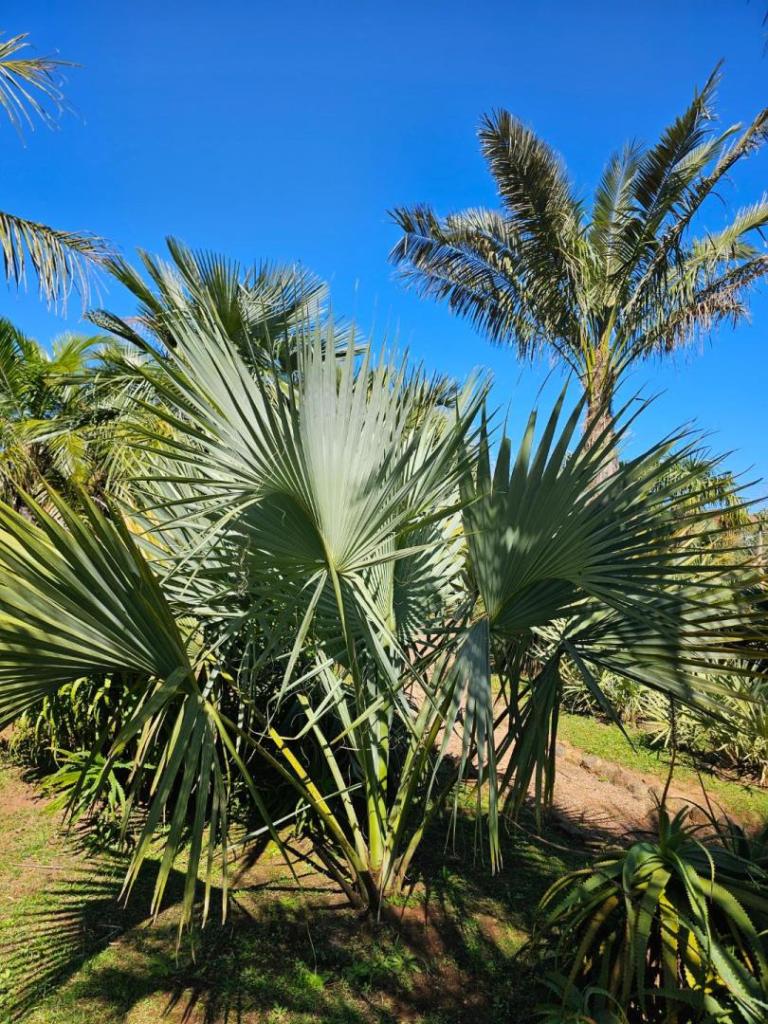







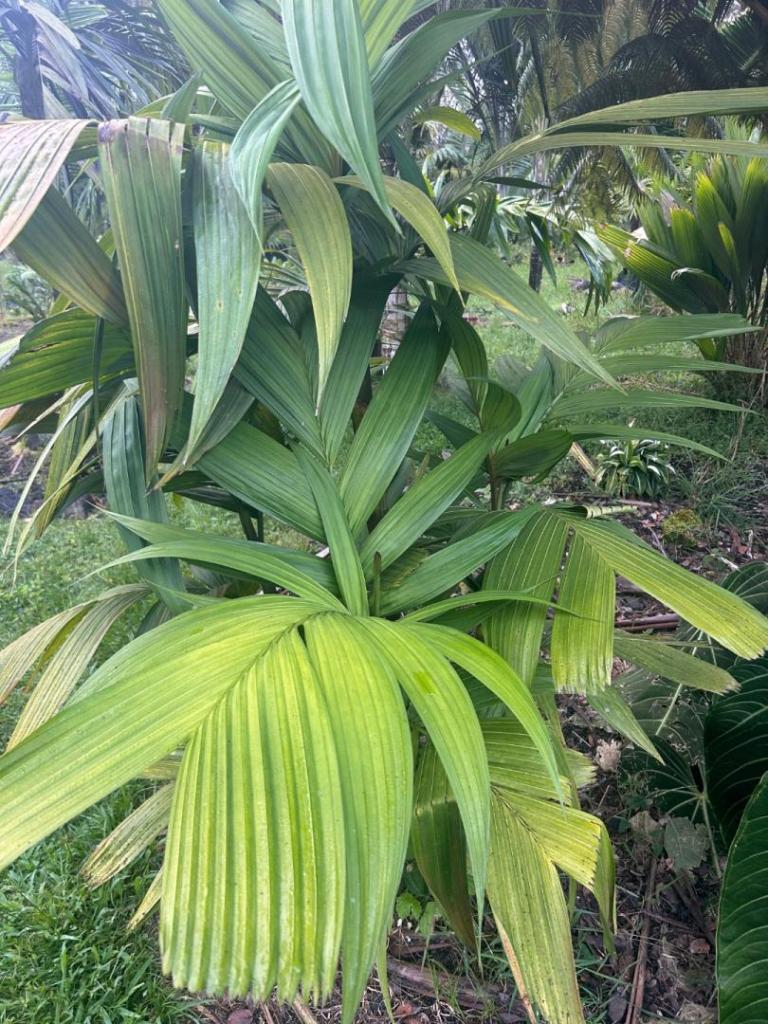



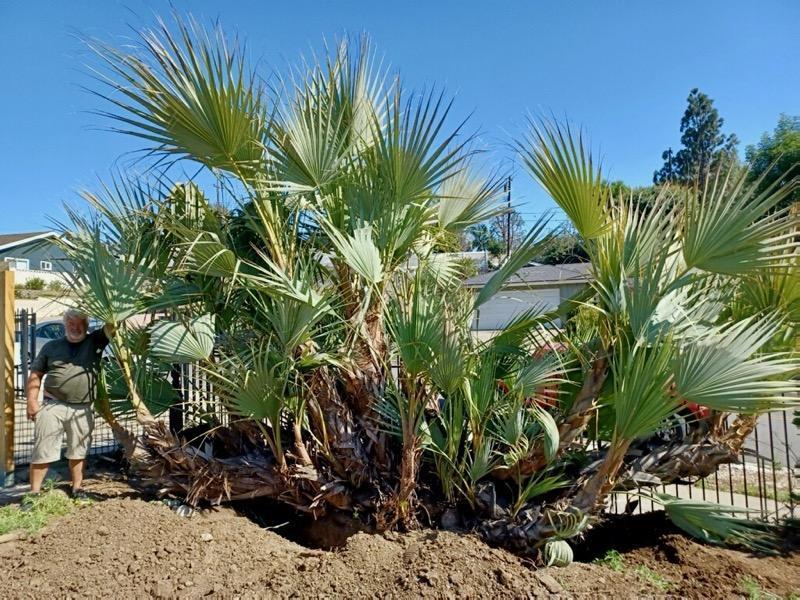
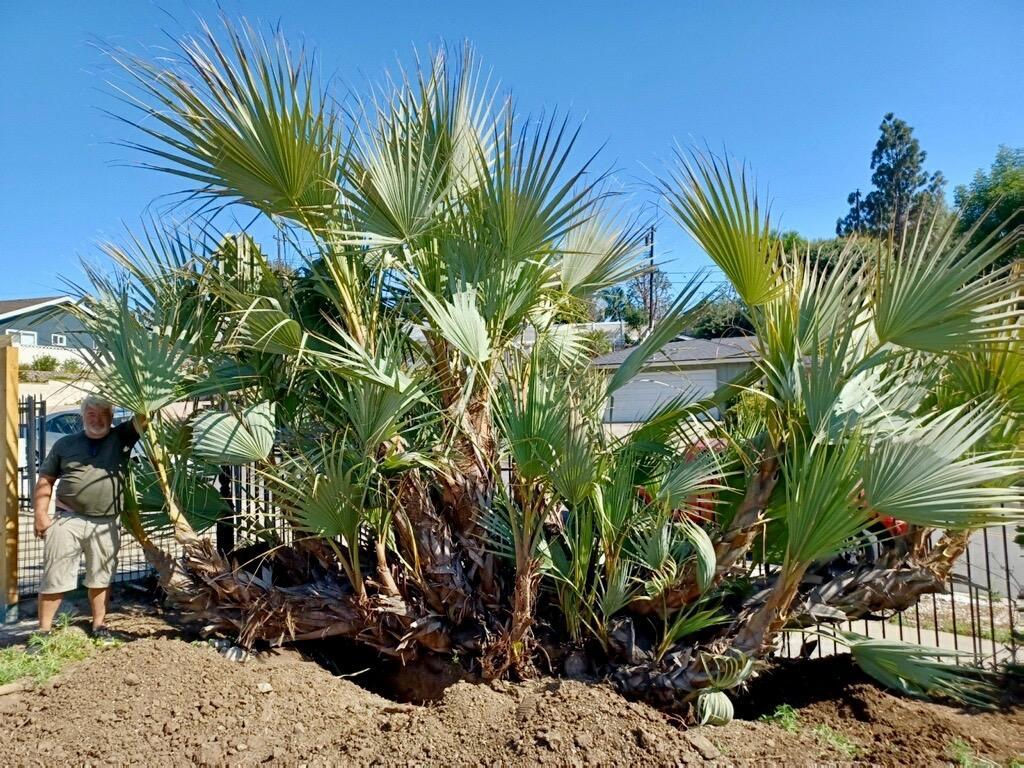
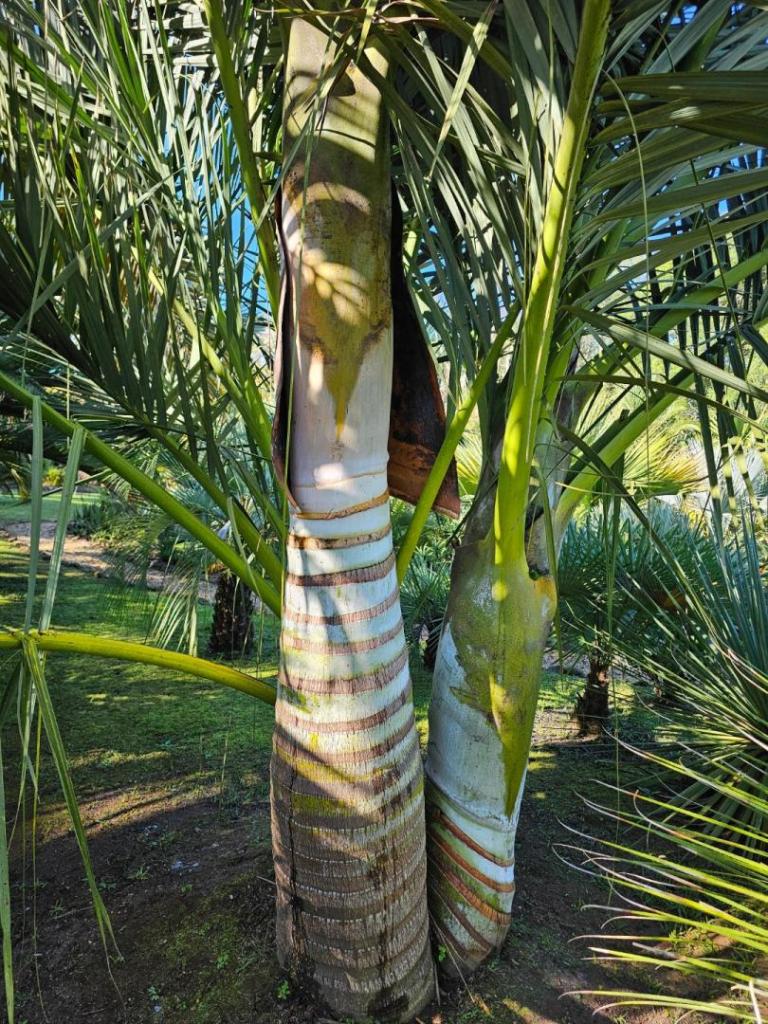




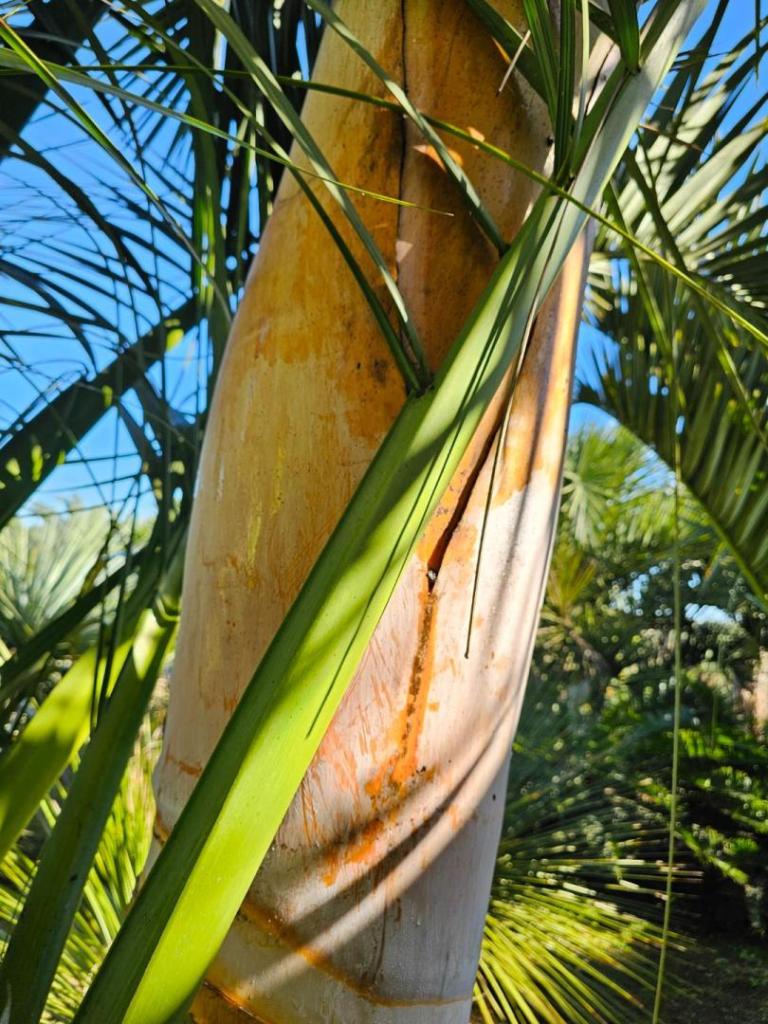
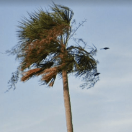
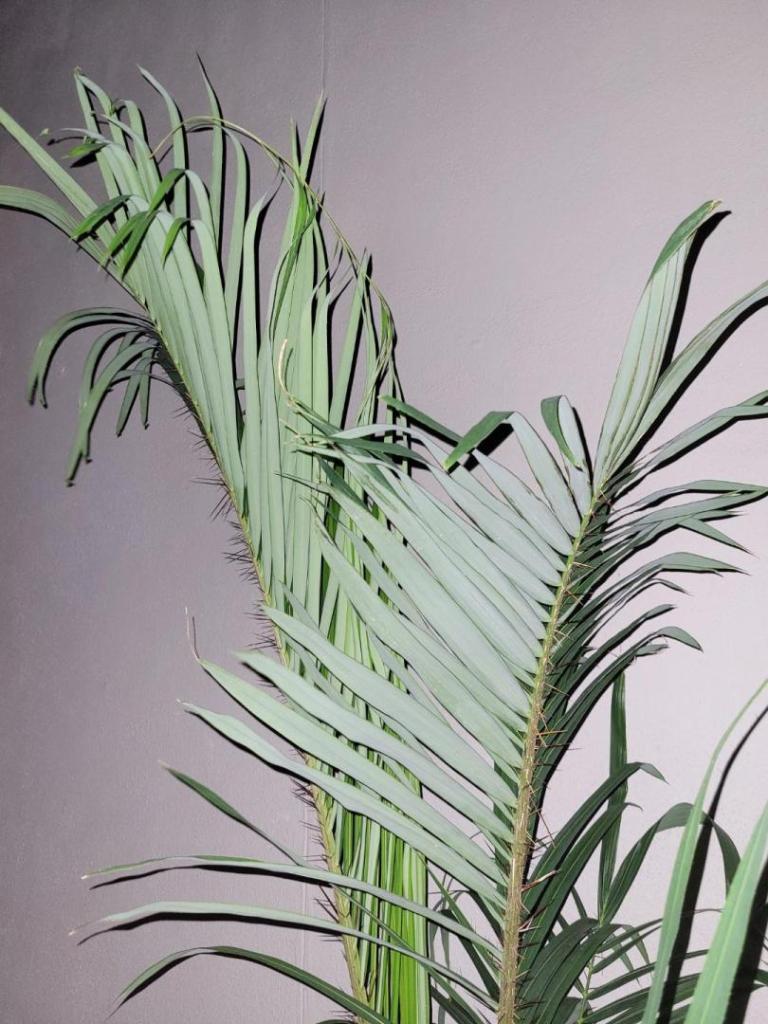
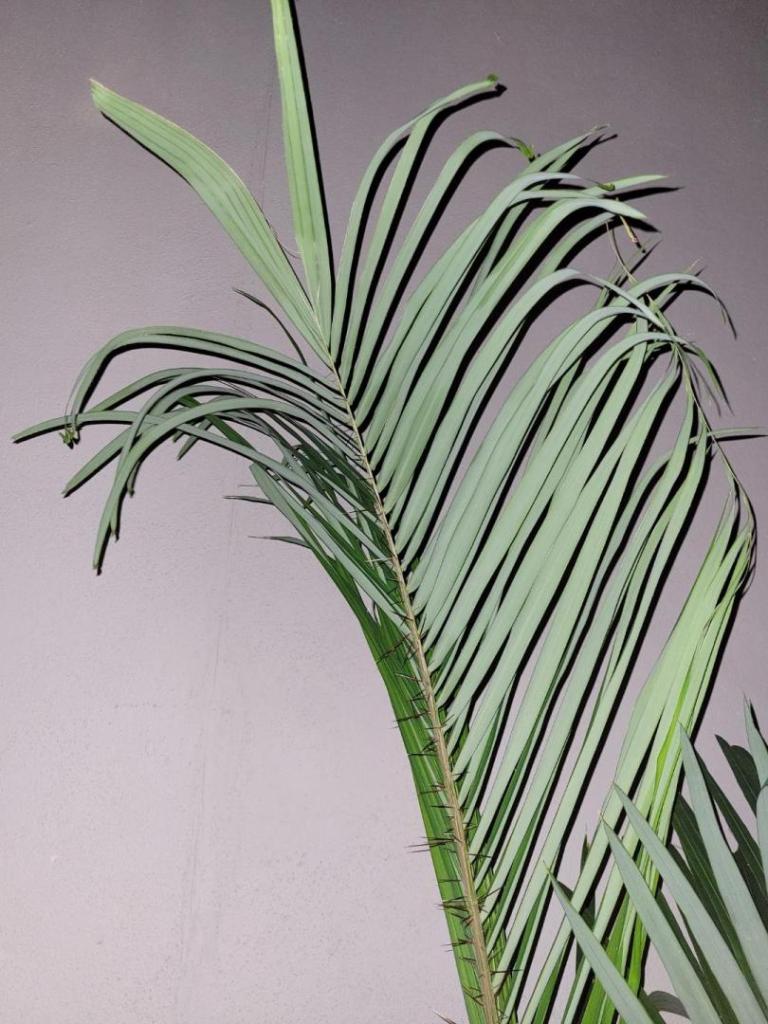










.jpg.982850ee215d9fb53c7abe979ec97ff5.jpg)



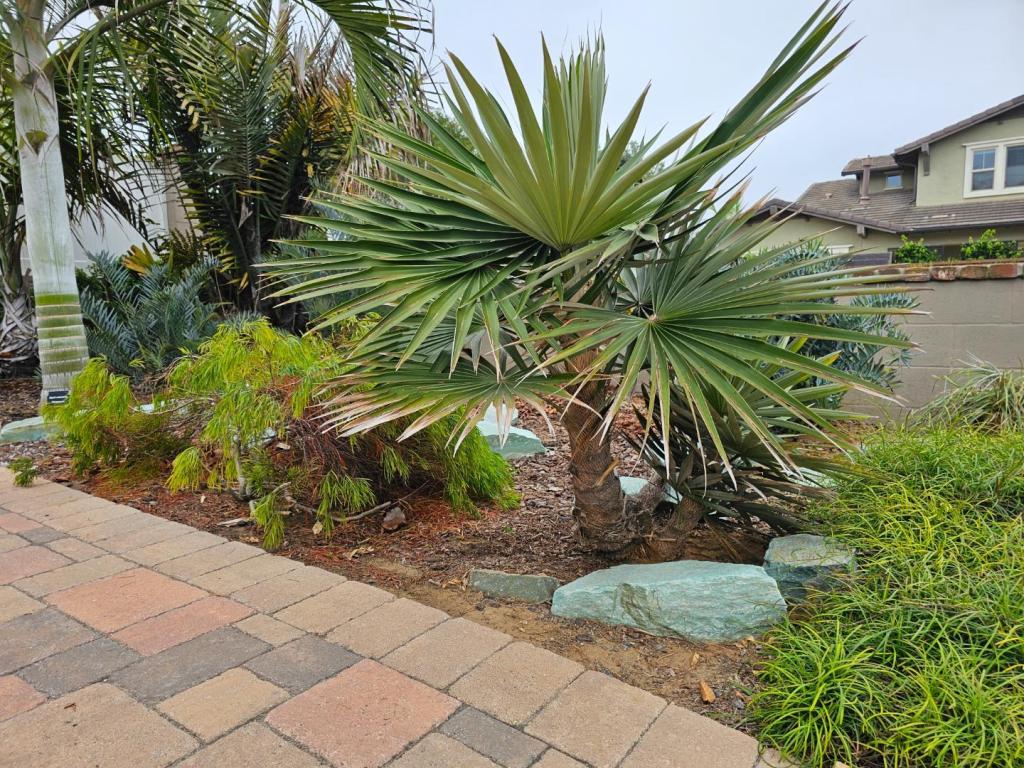

.jpg.0cf735c7525858af1582442942bc68e8.thumb.jpg.894f59a749fff01eb286c1fe4a50ab62.jpg)





